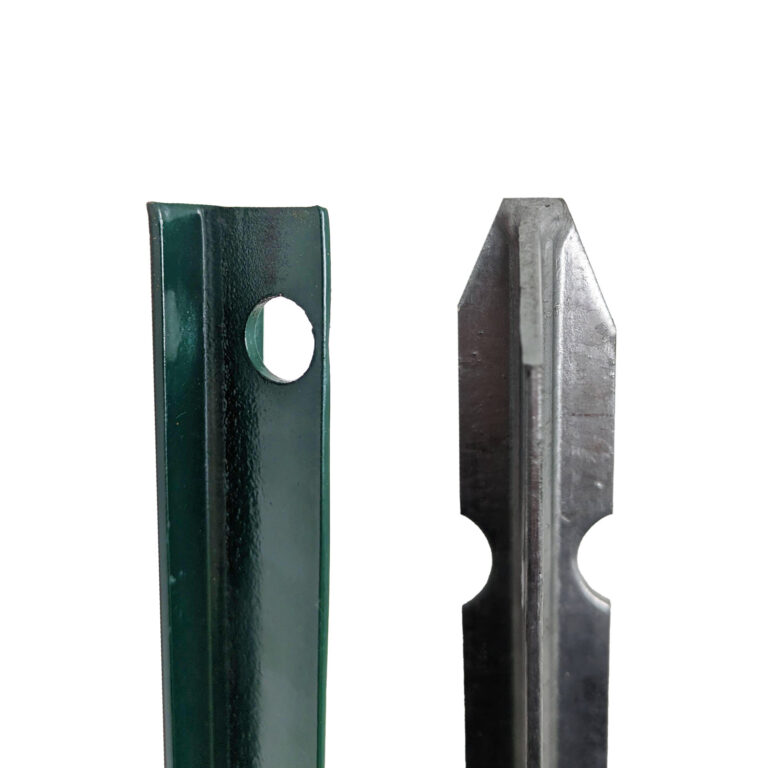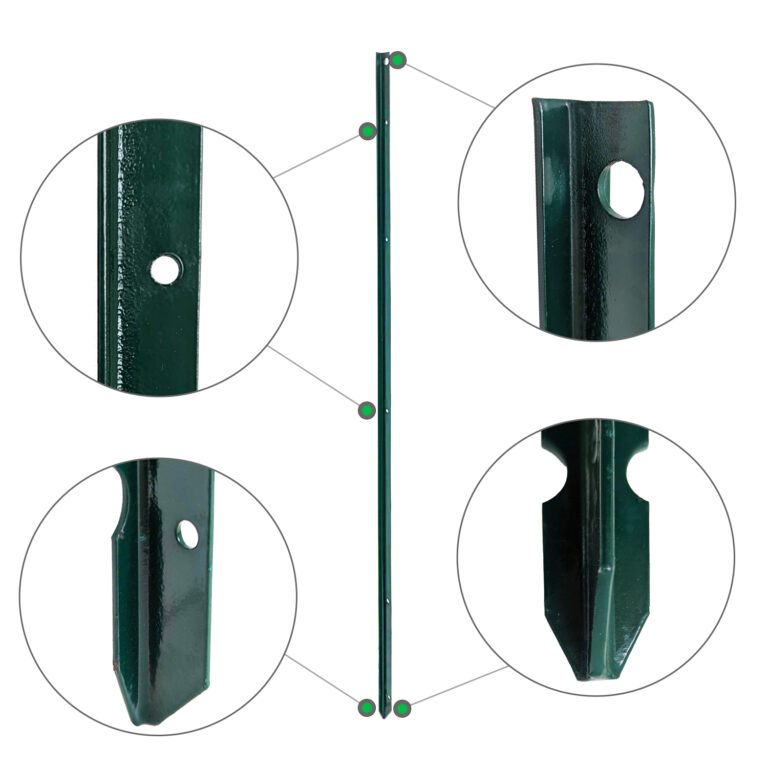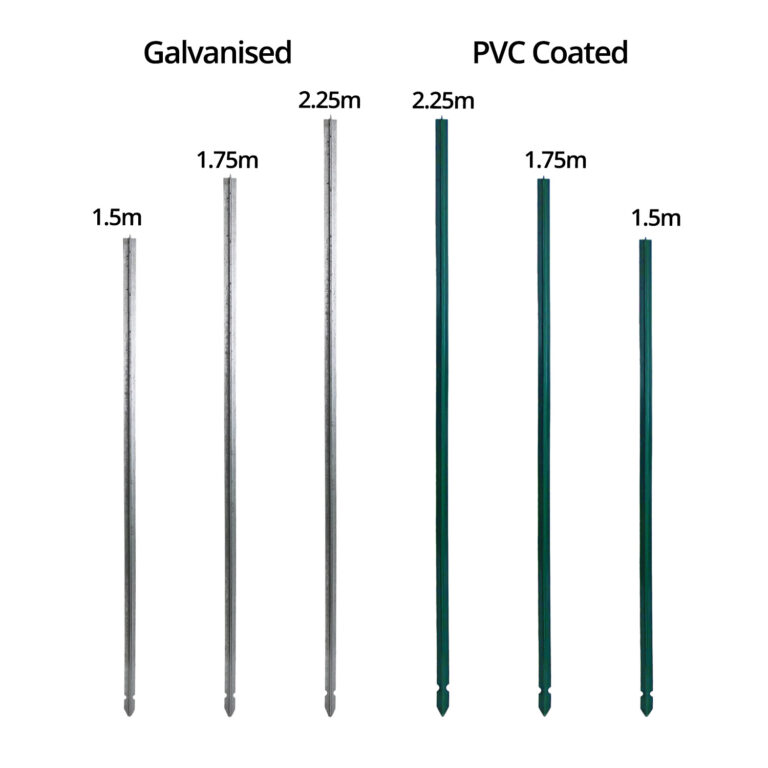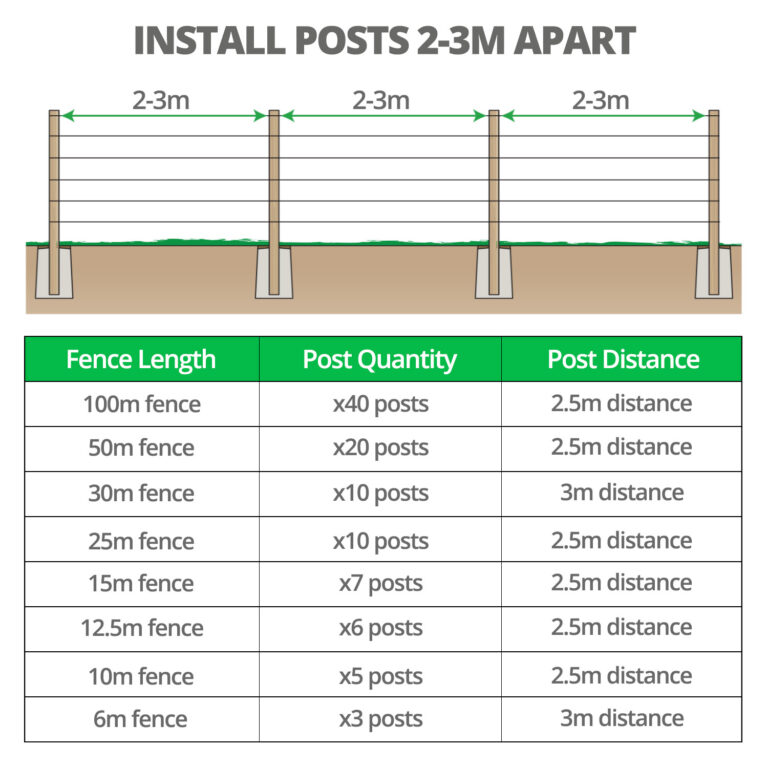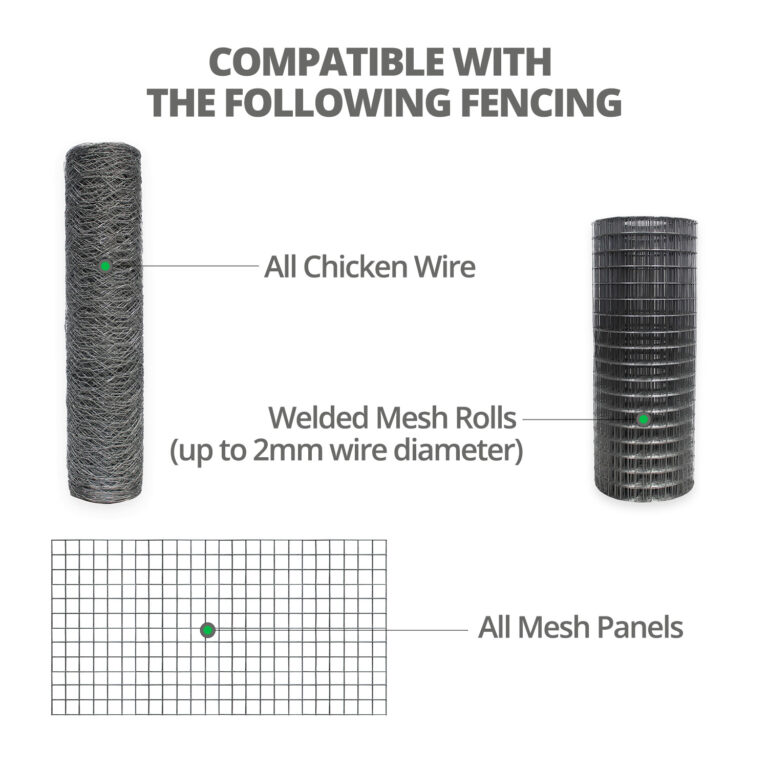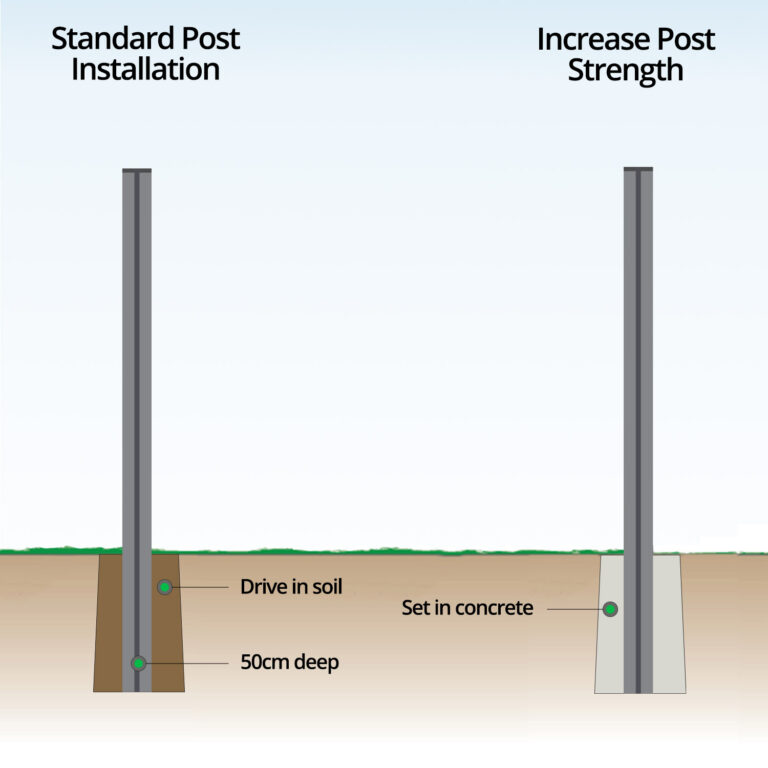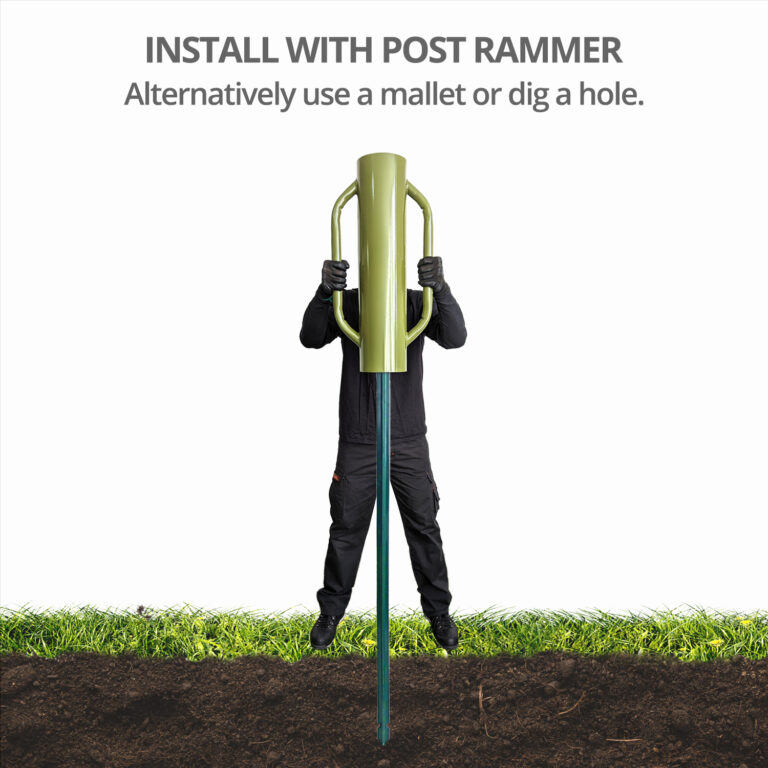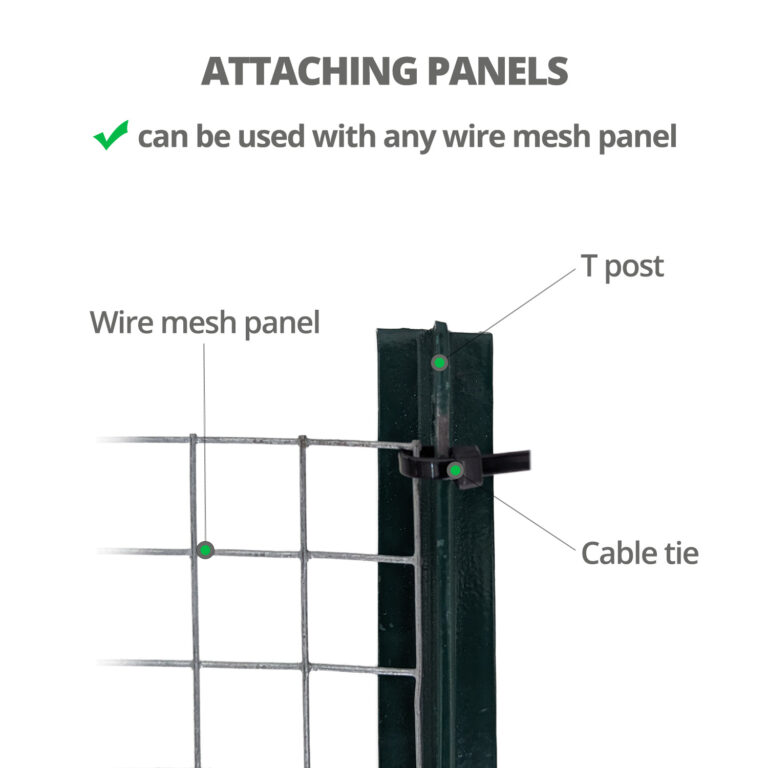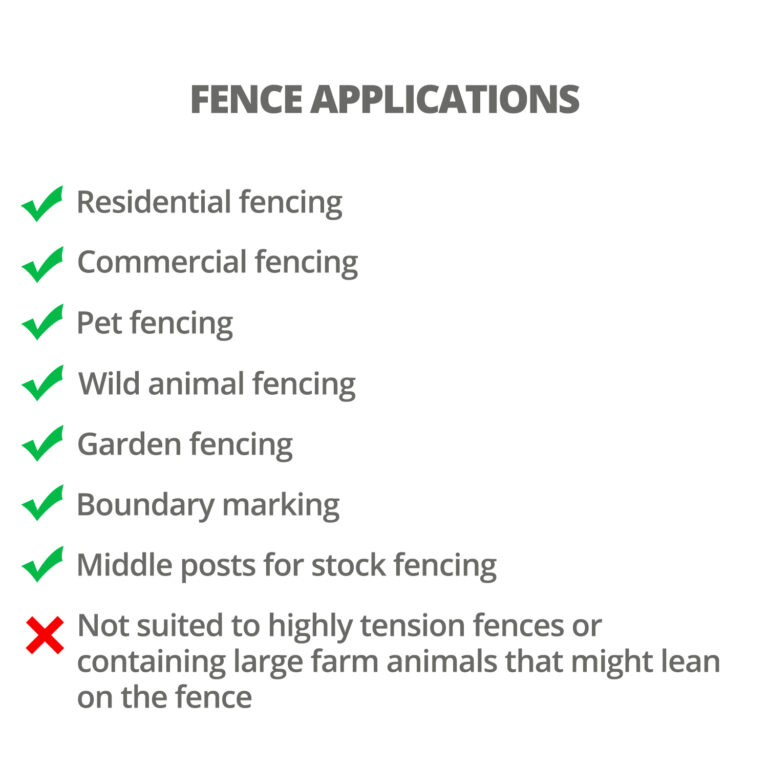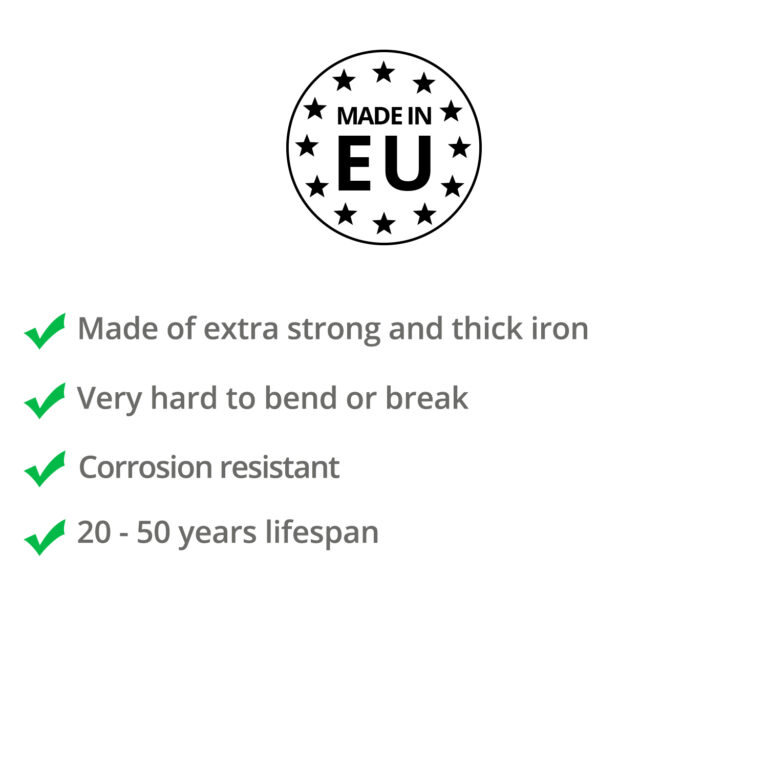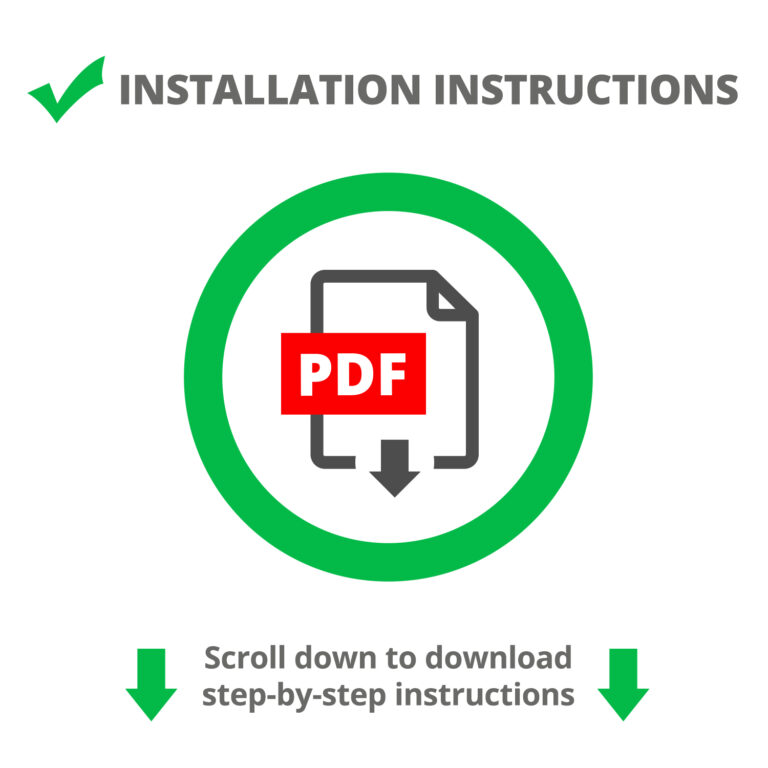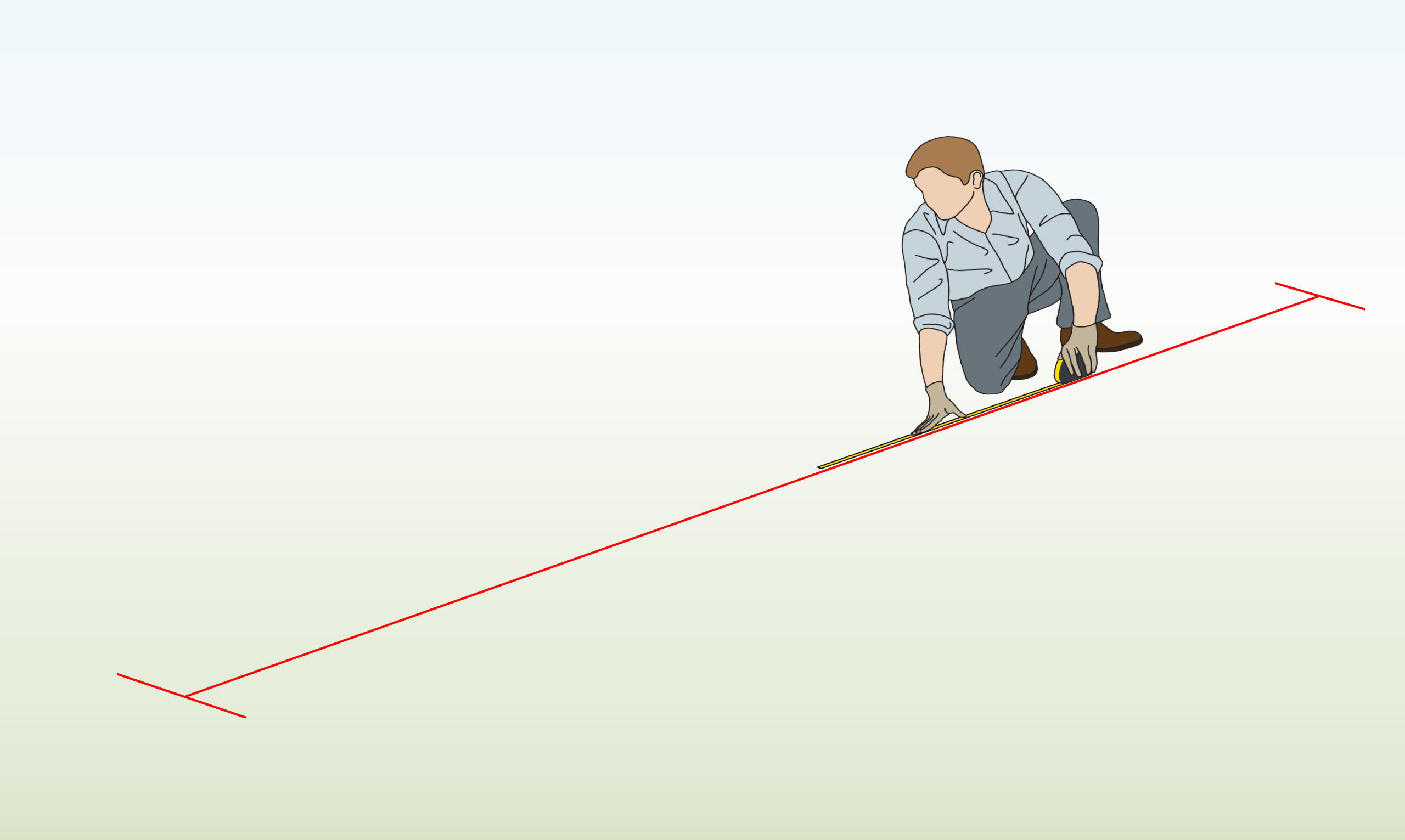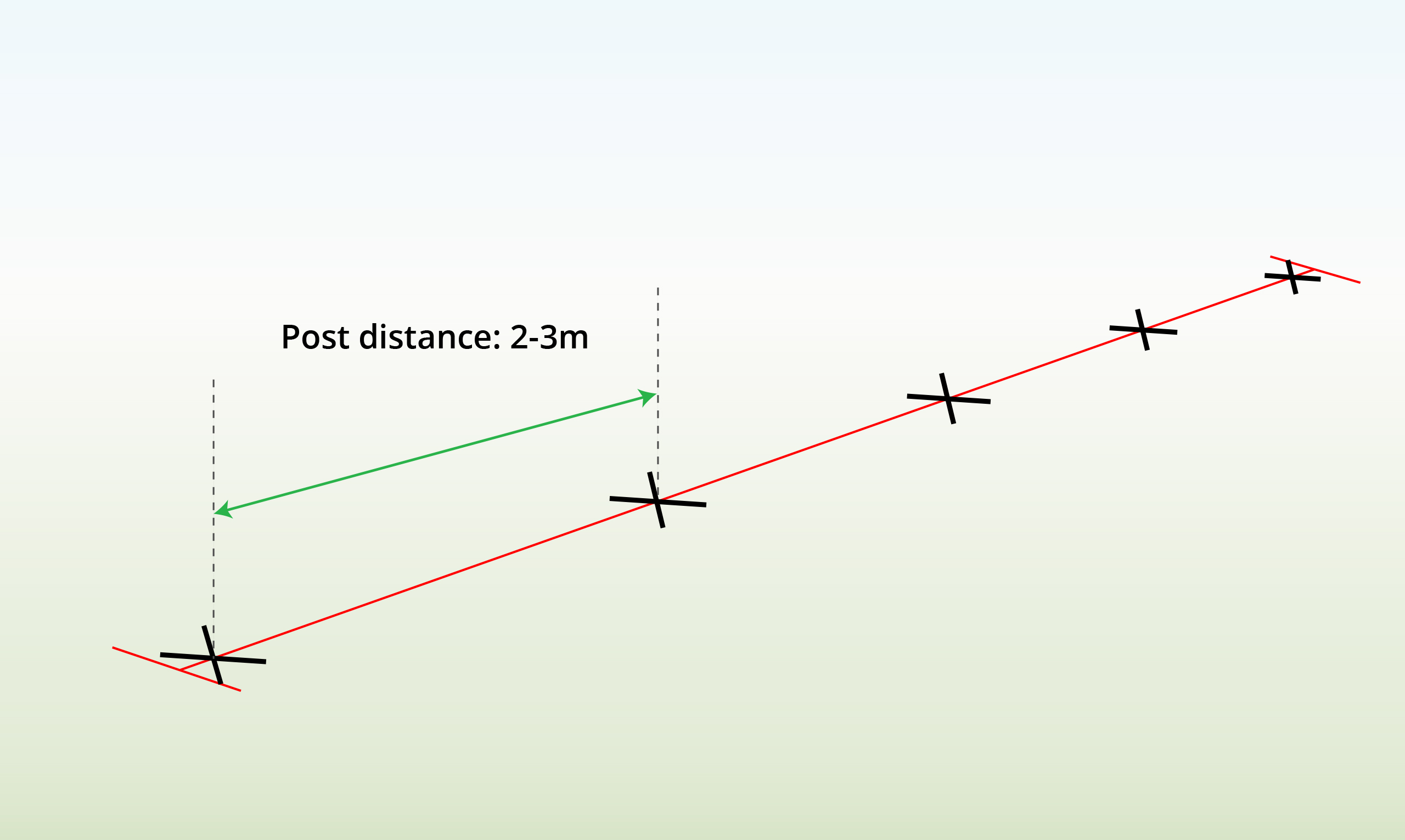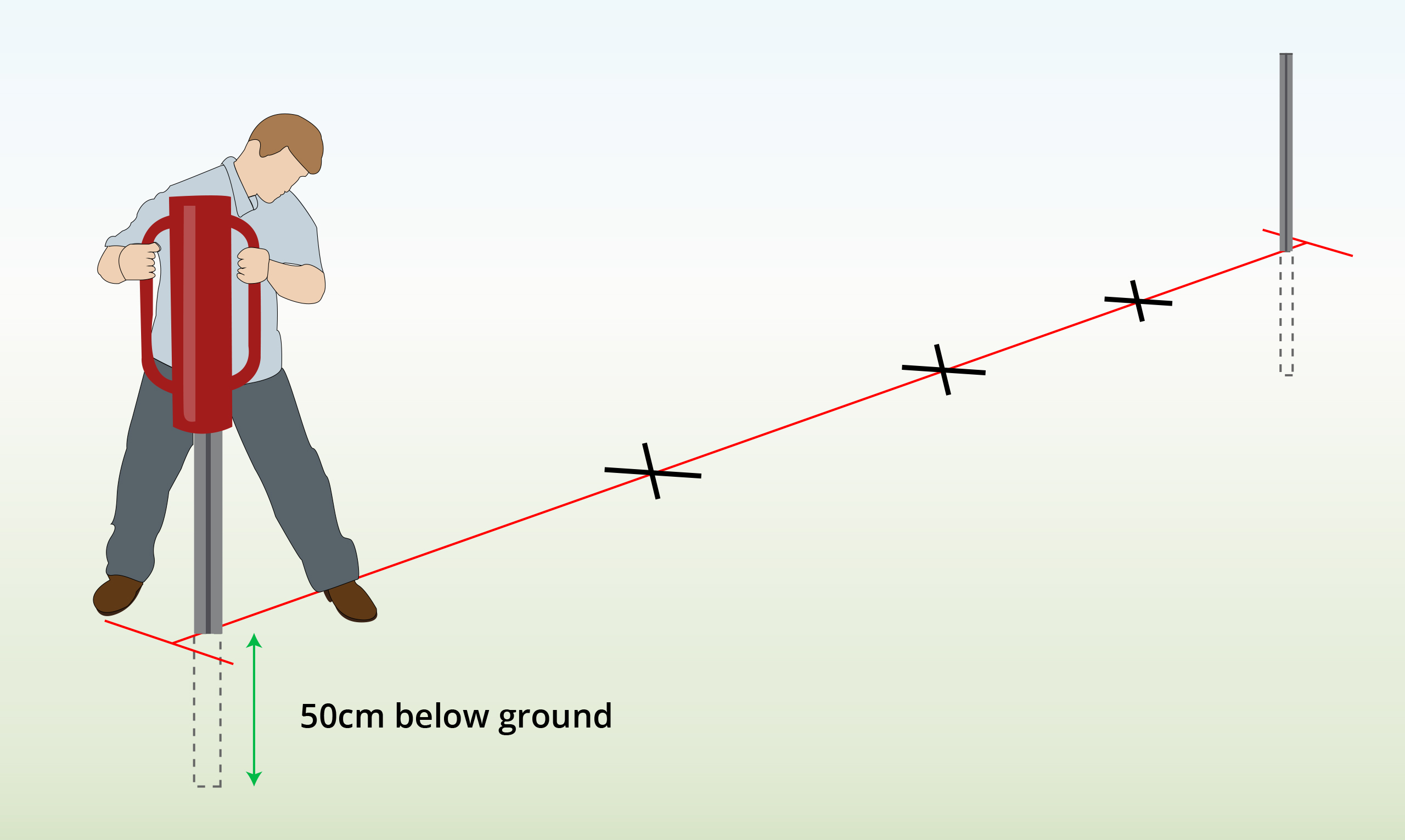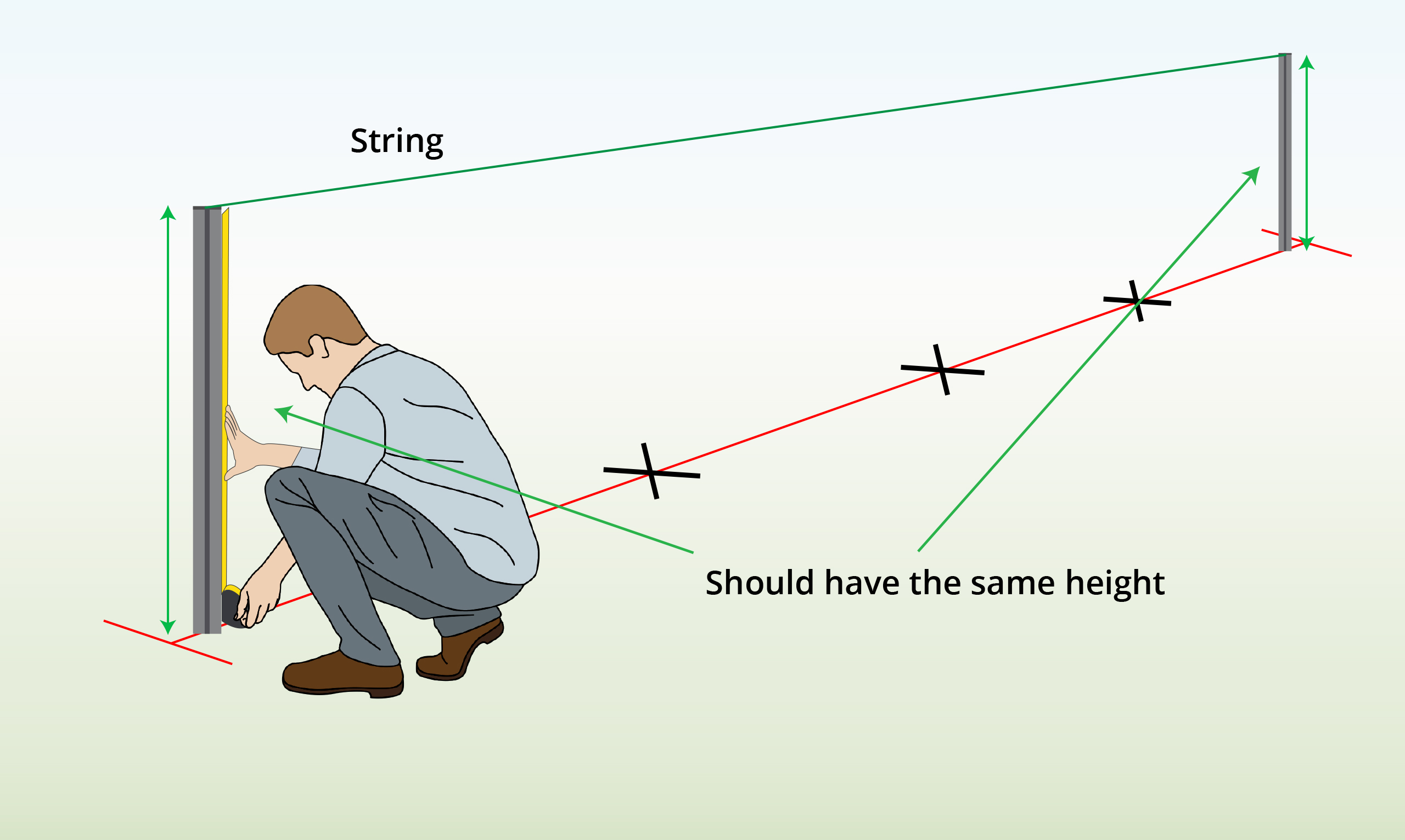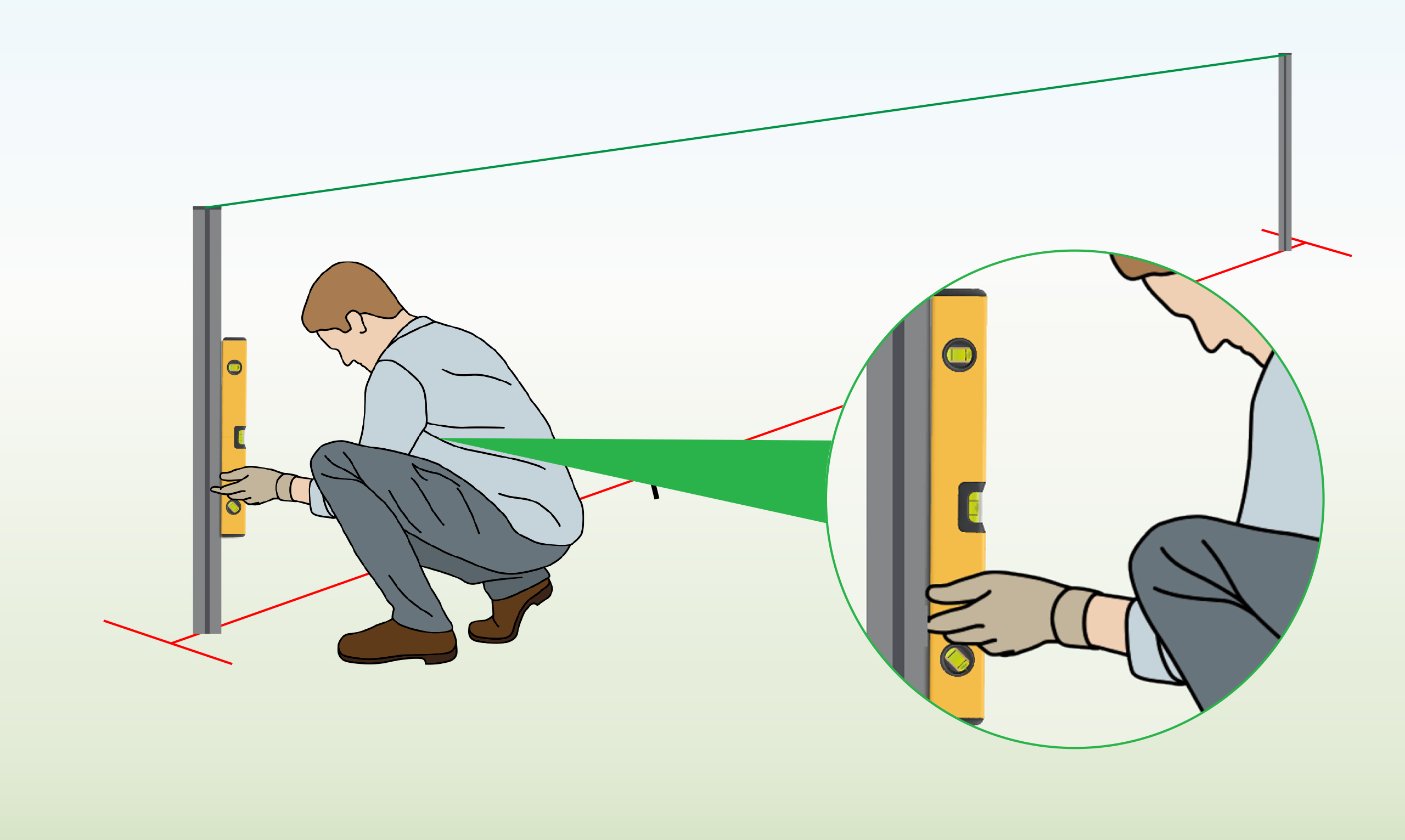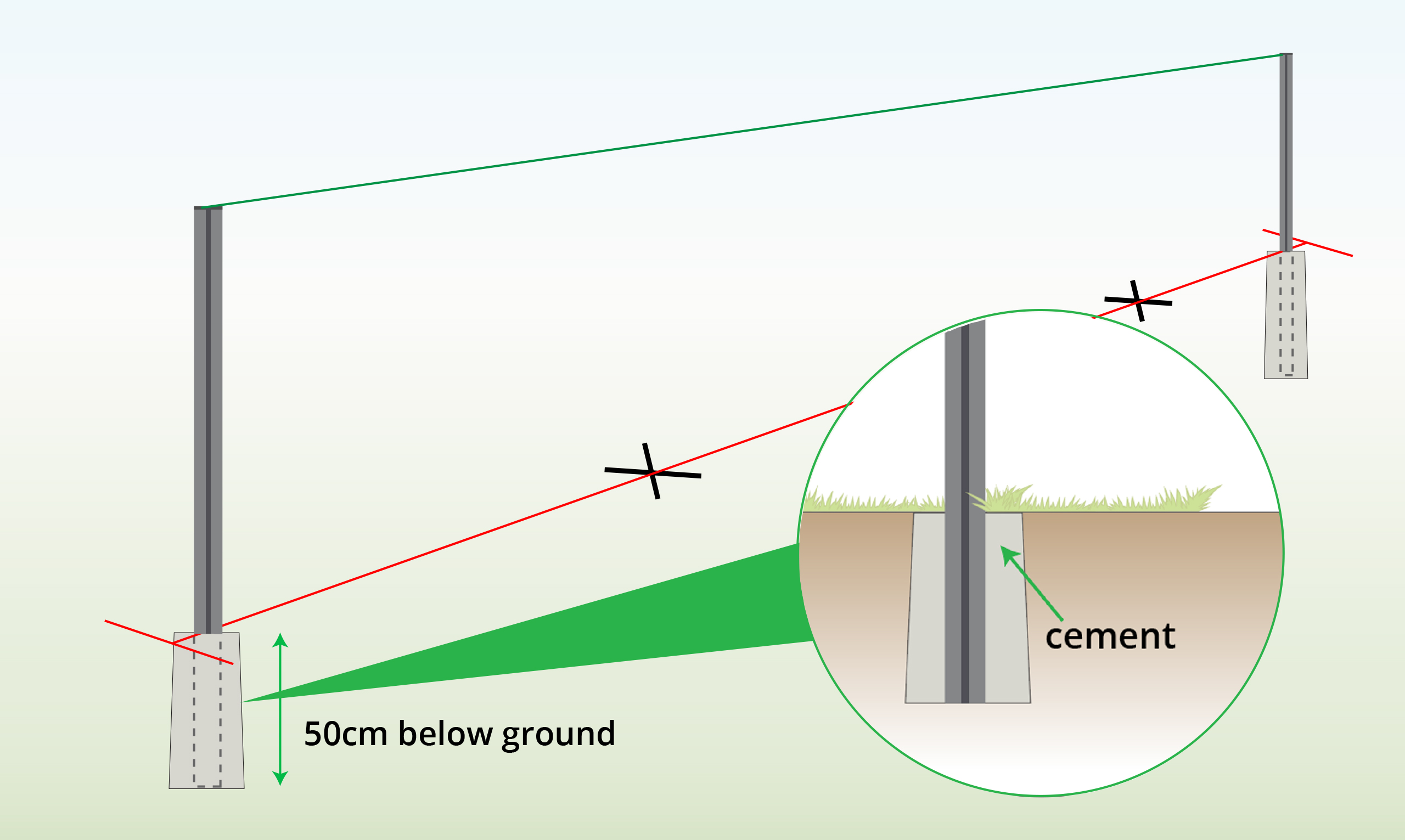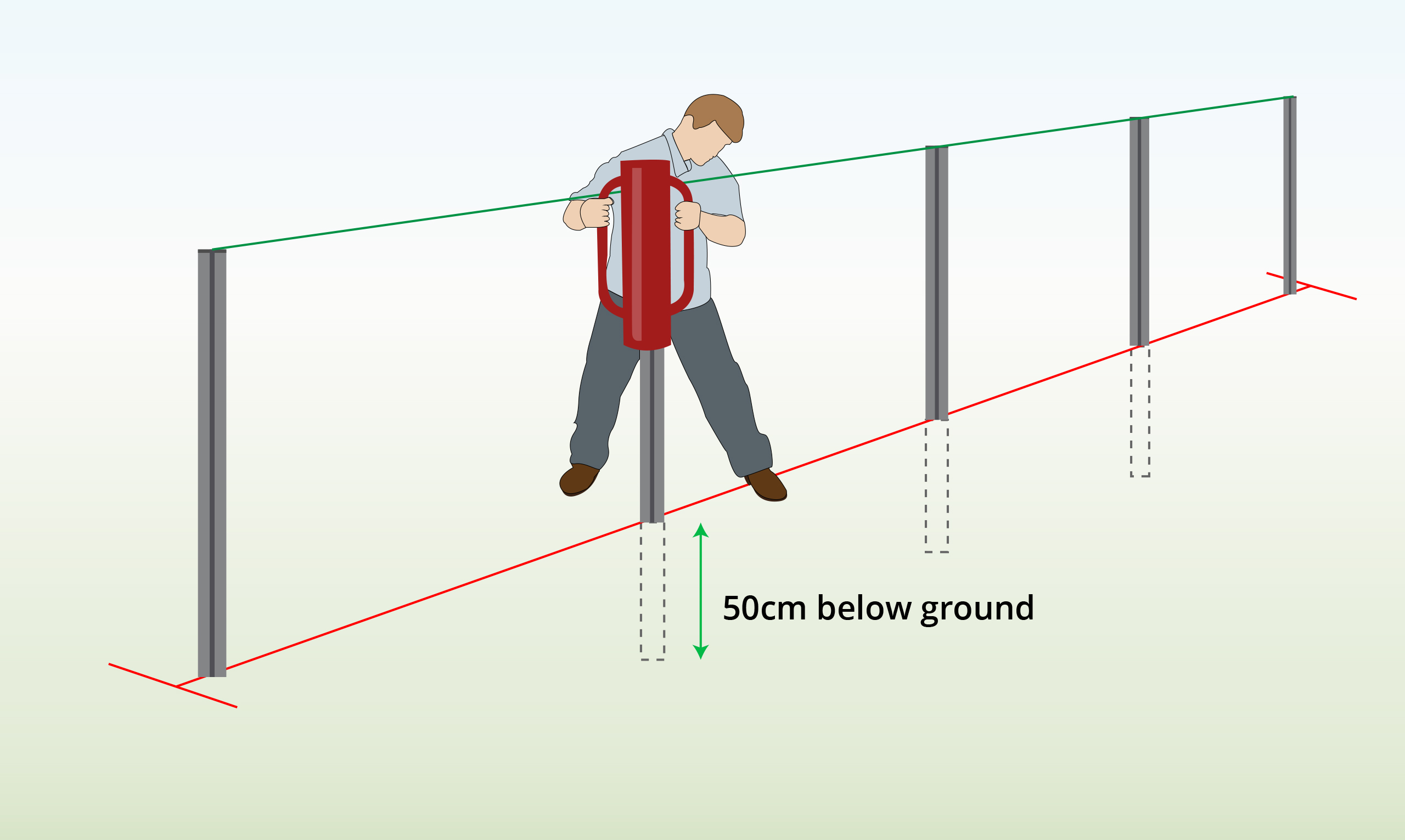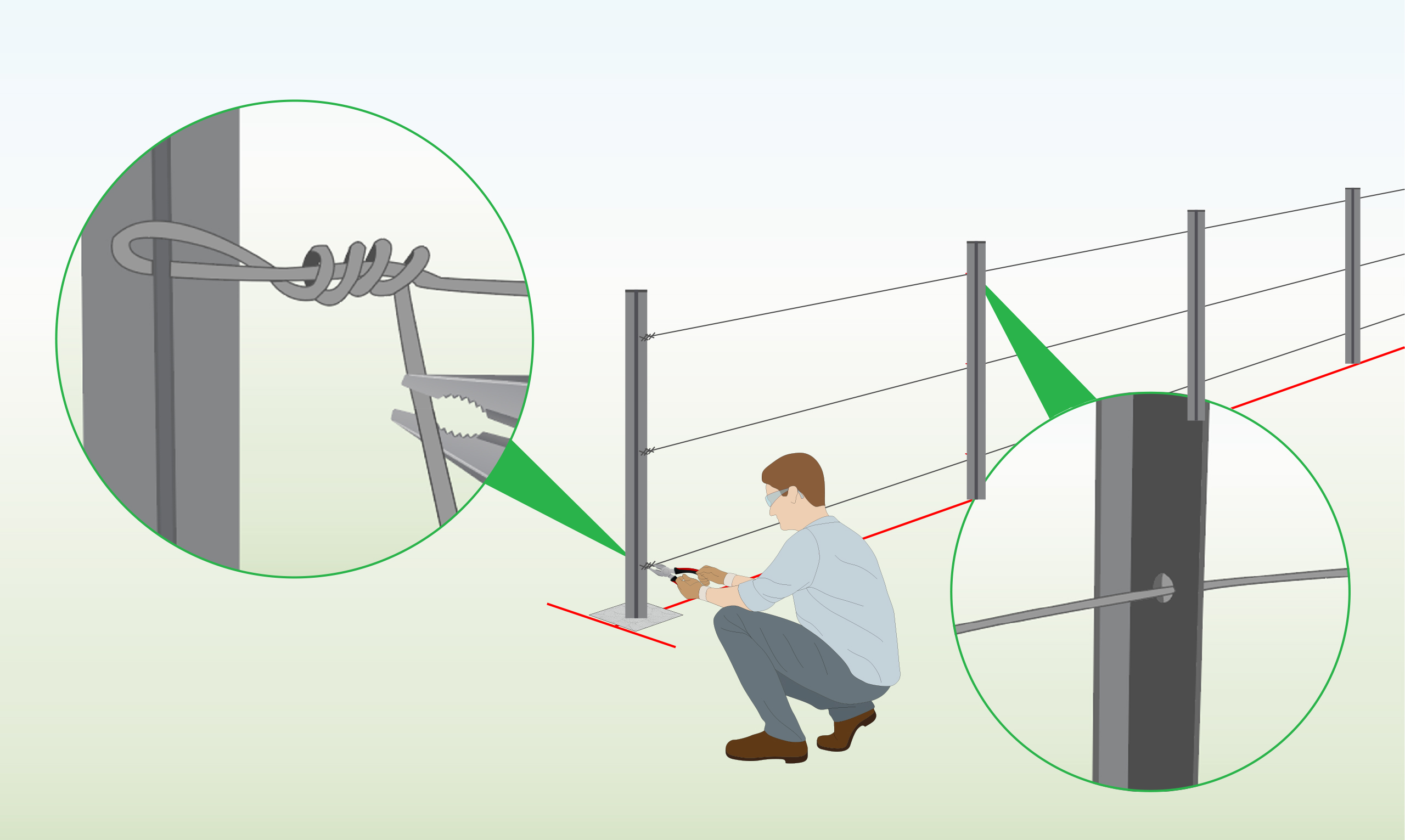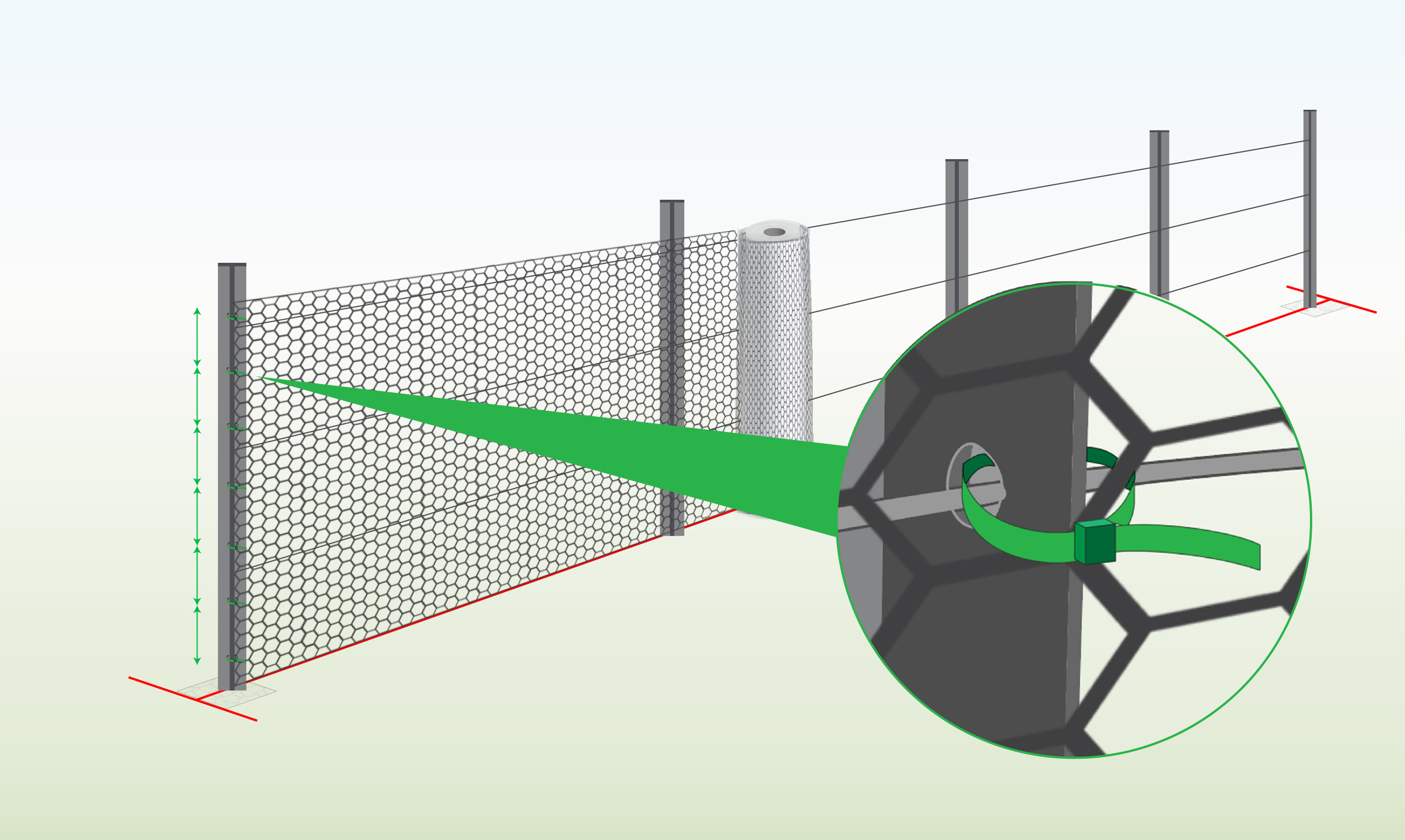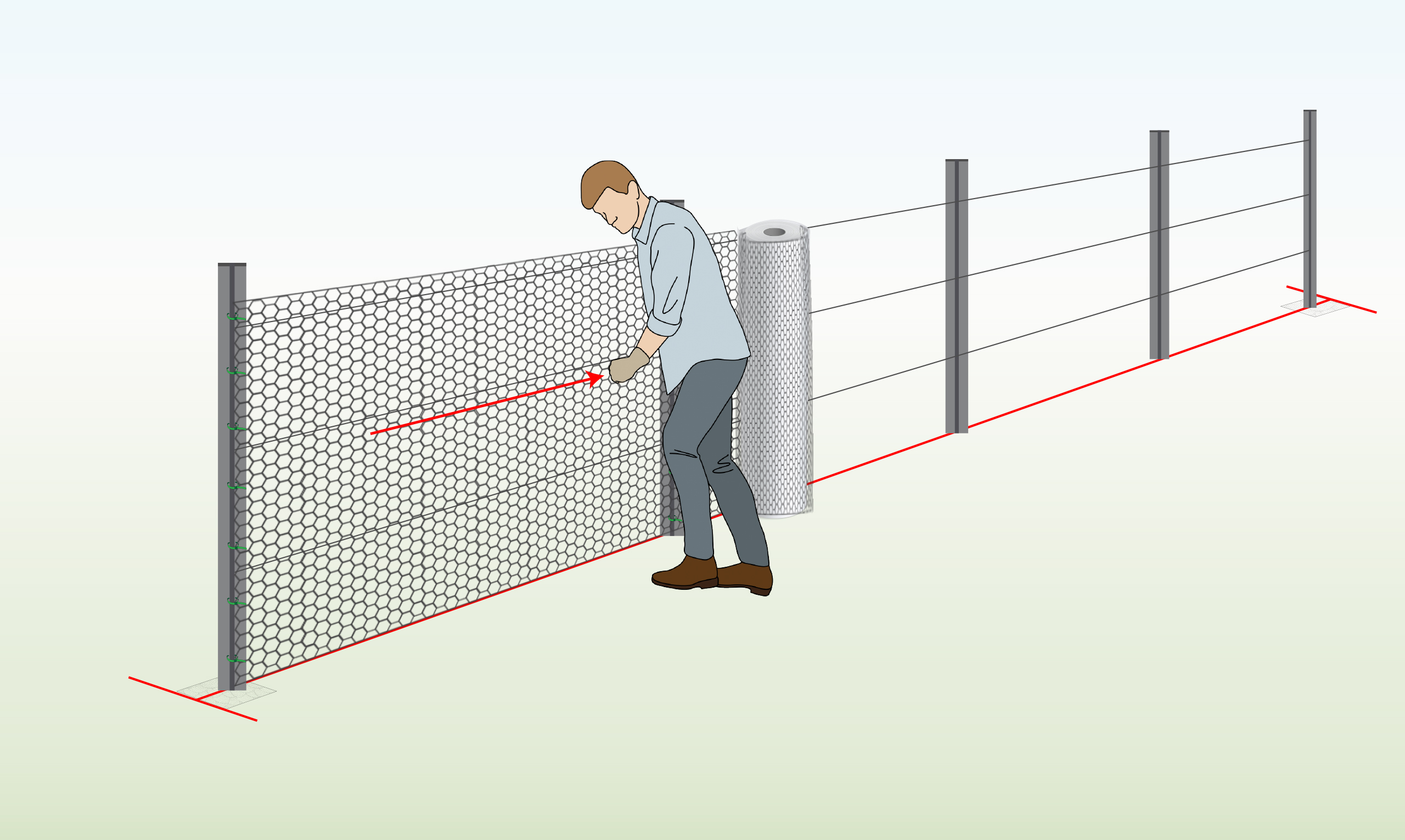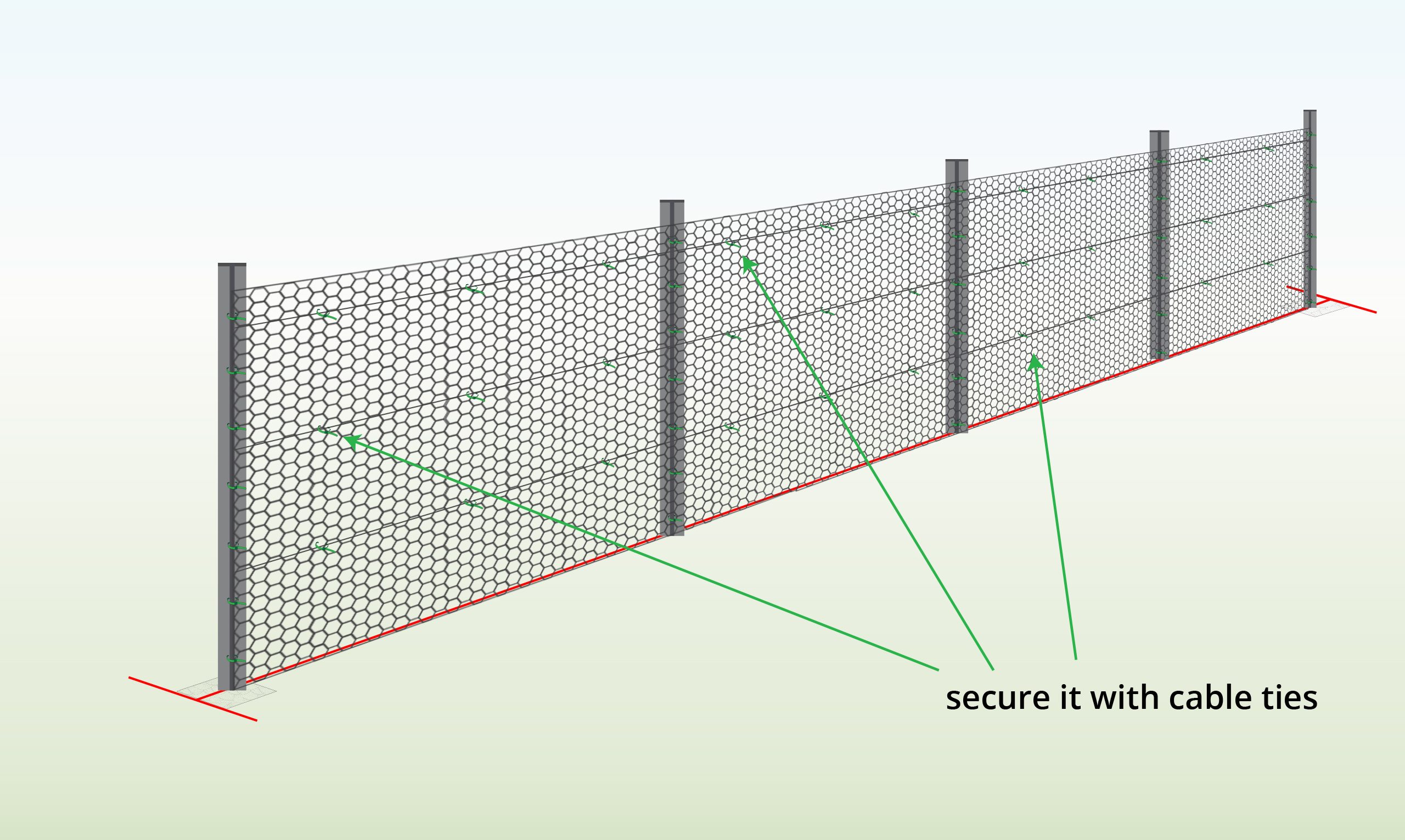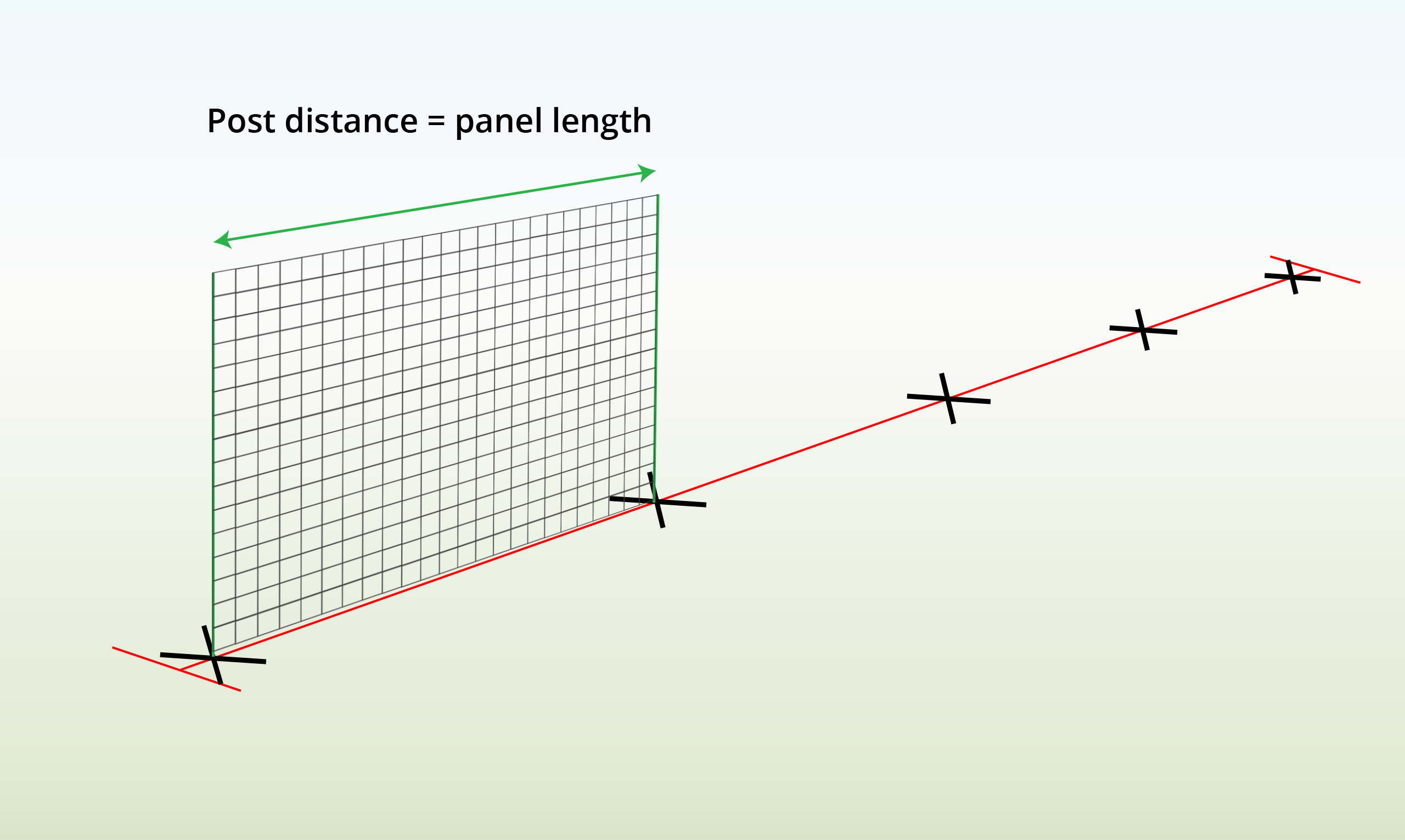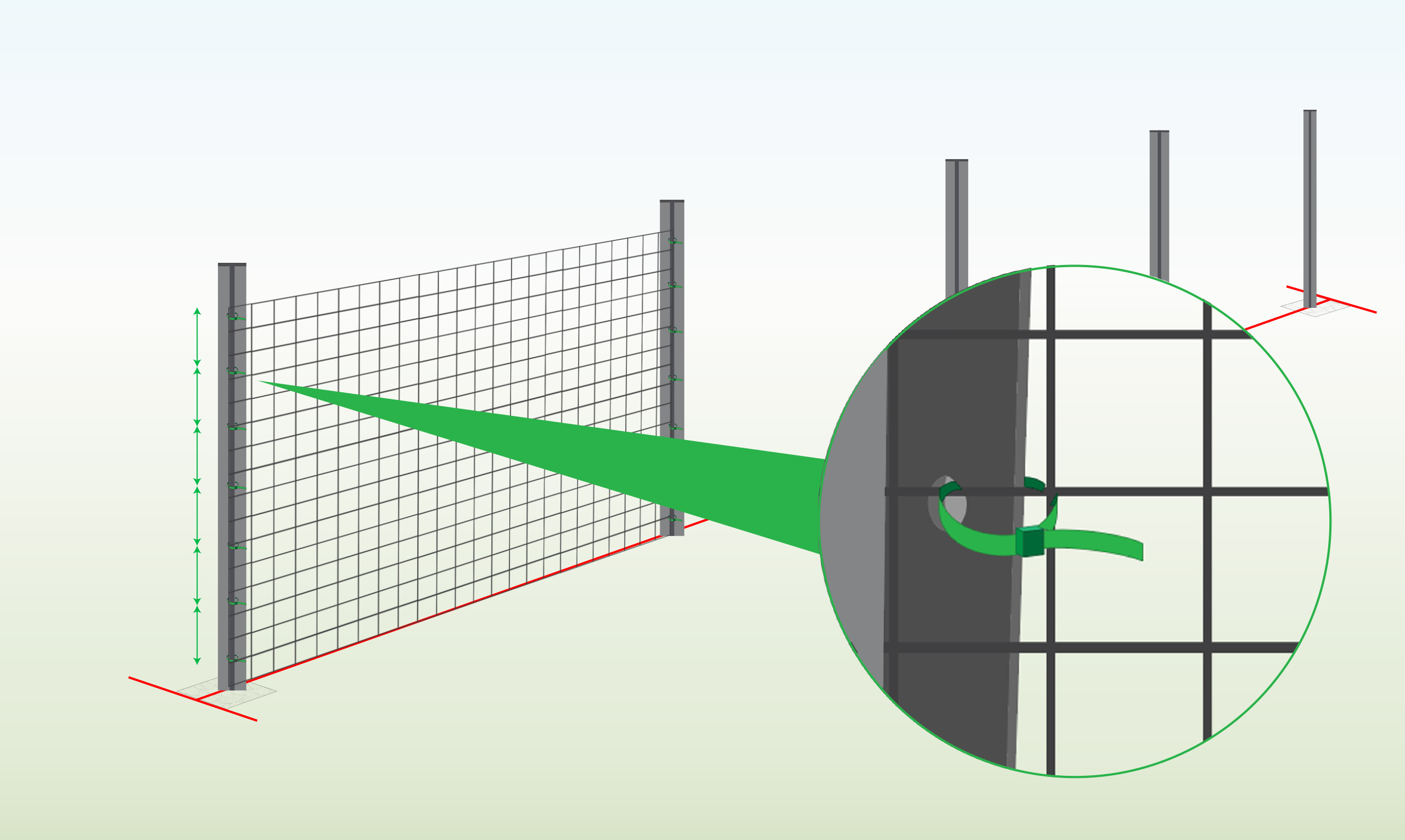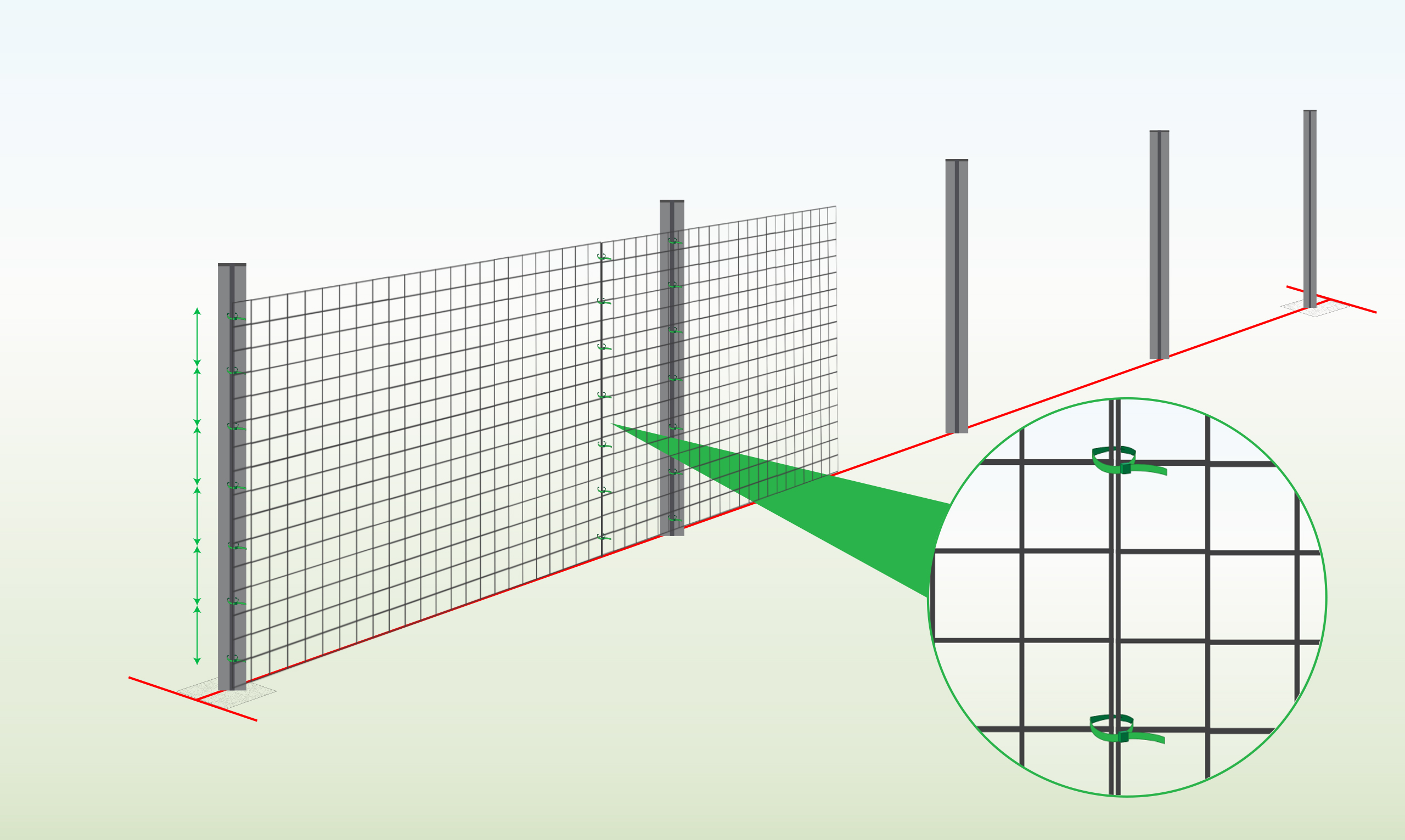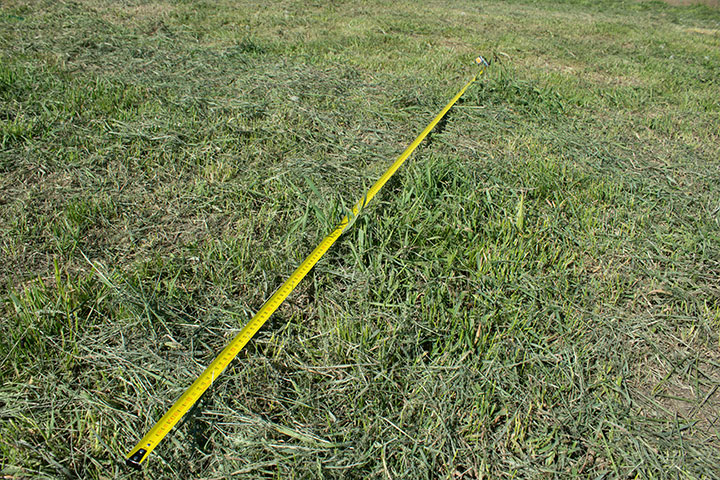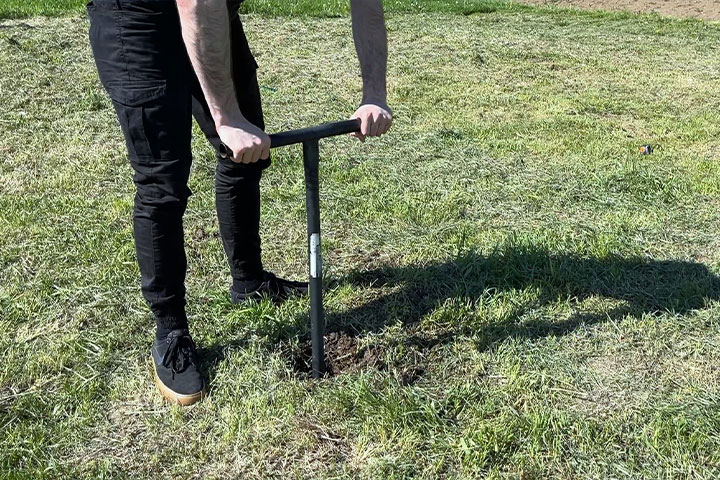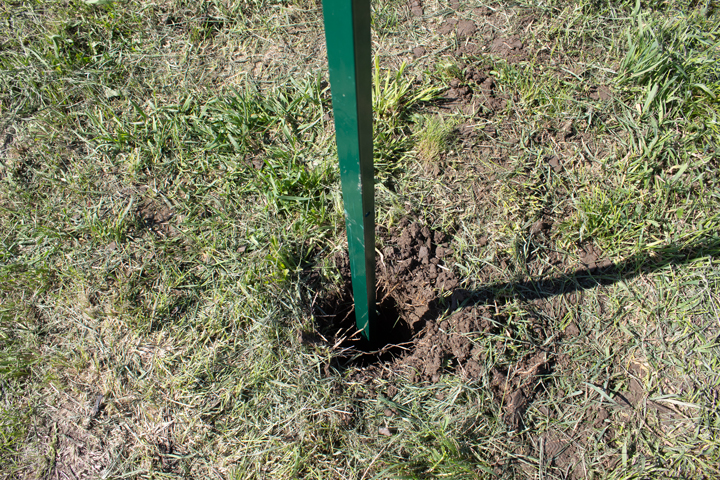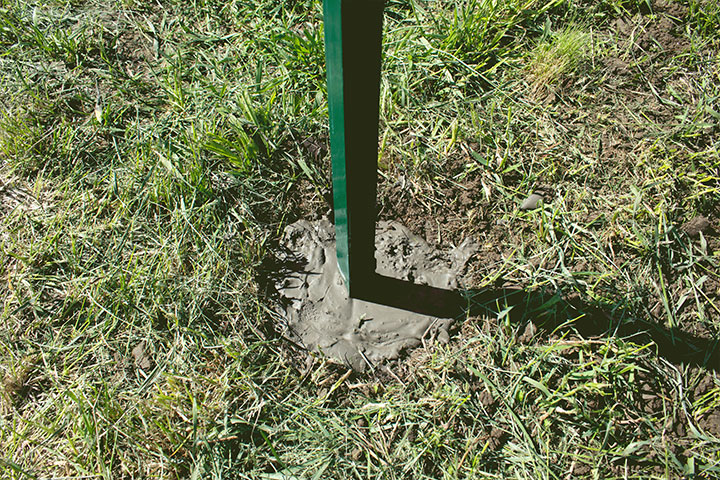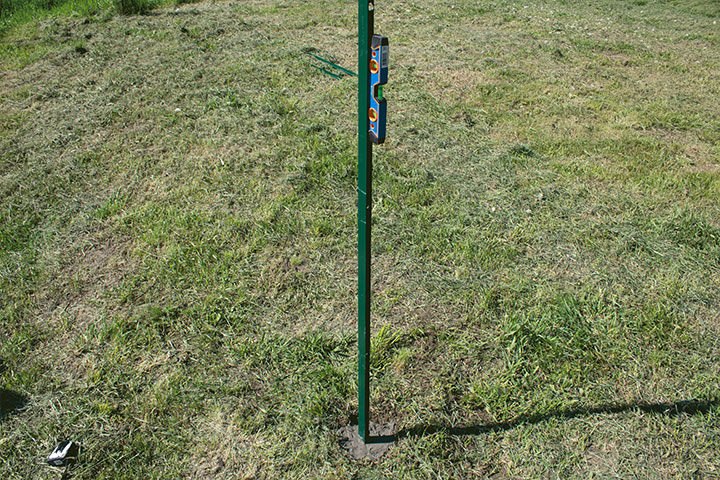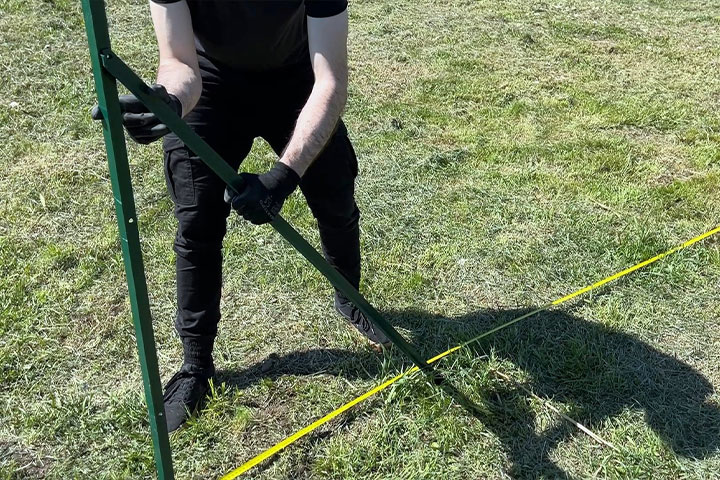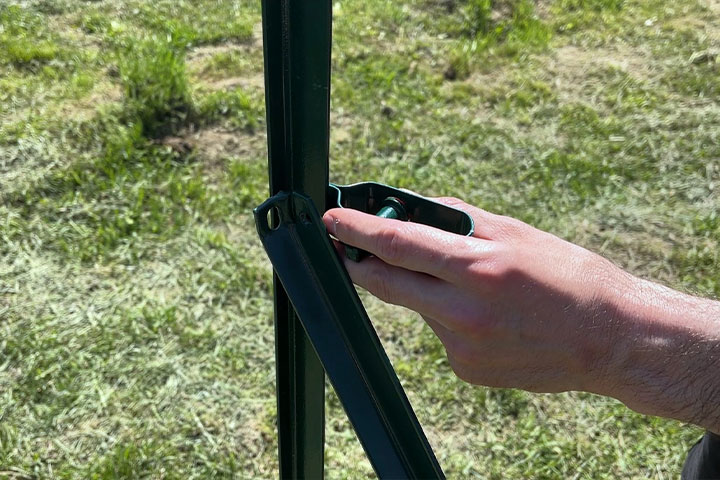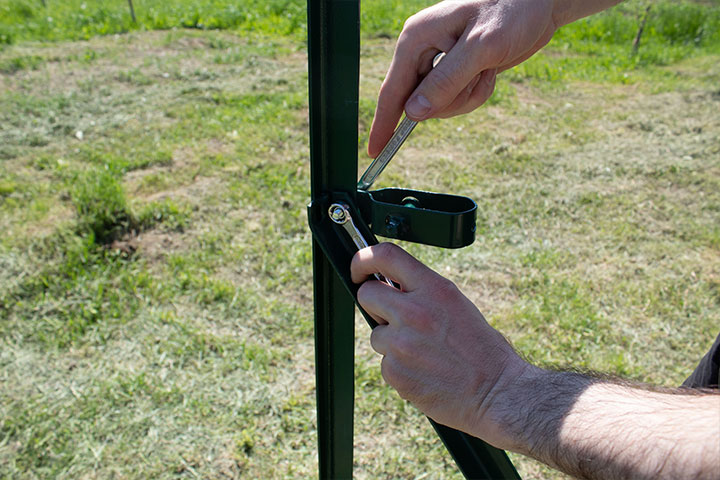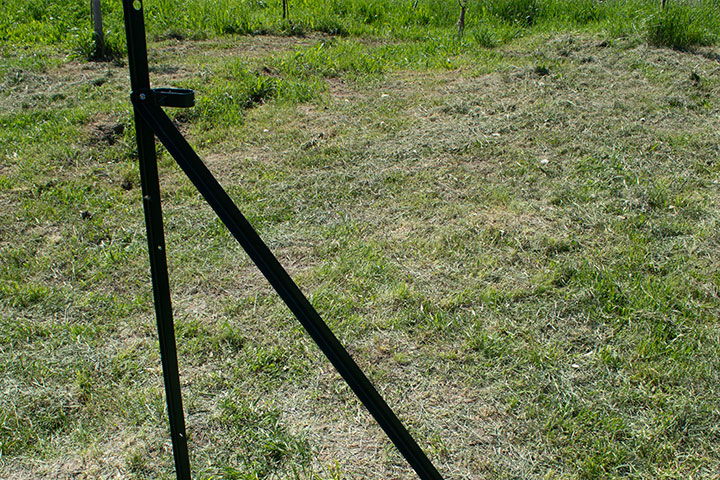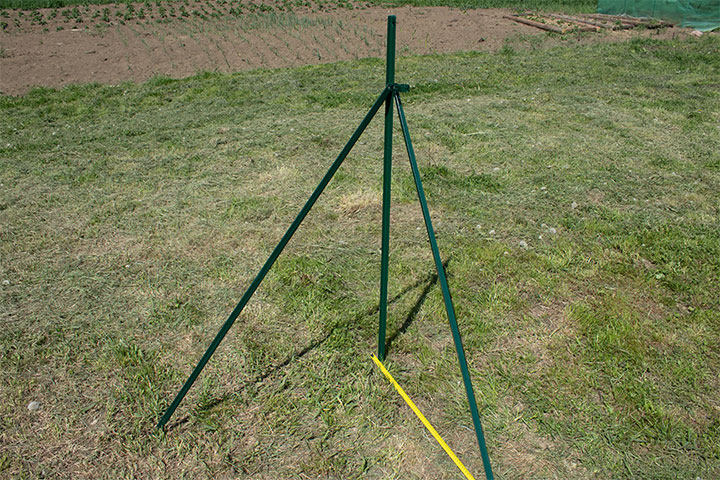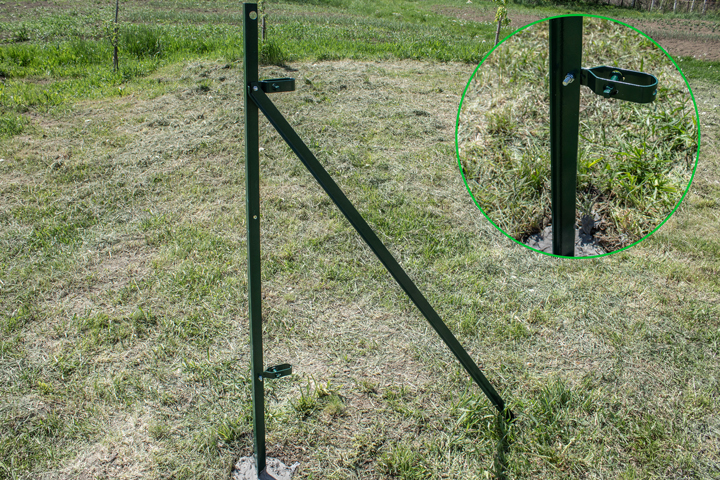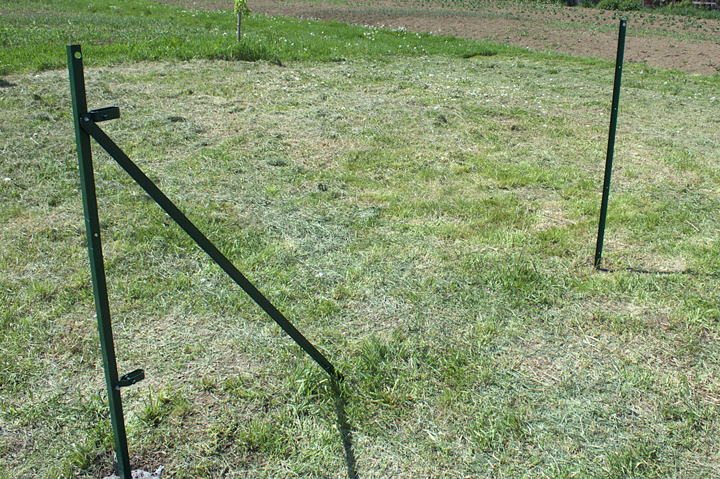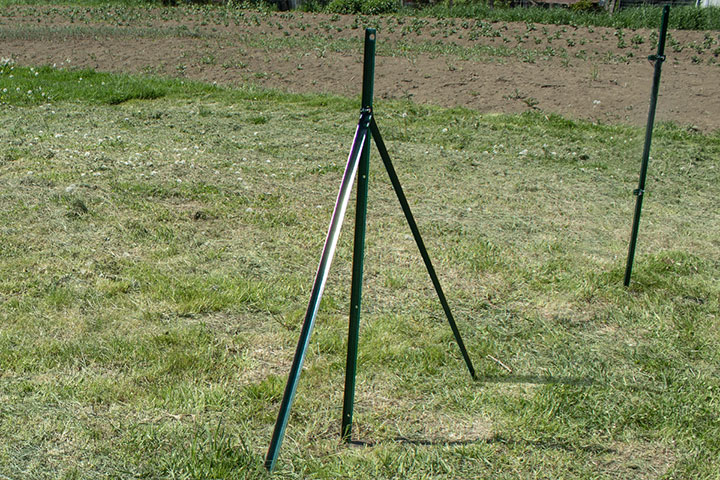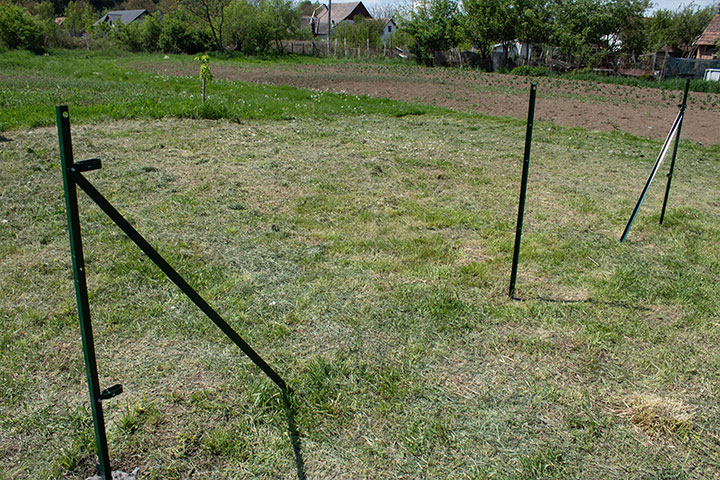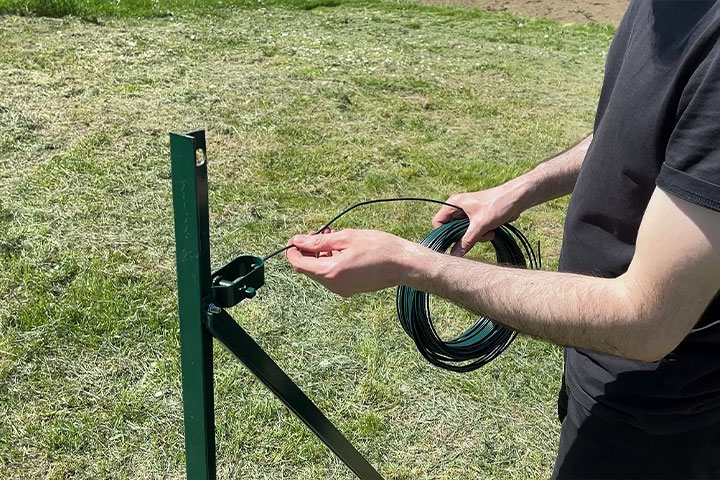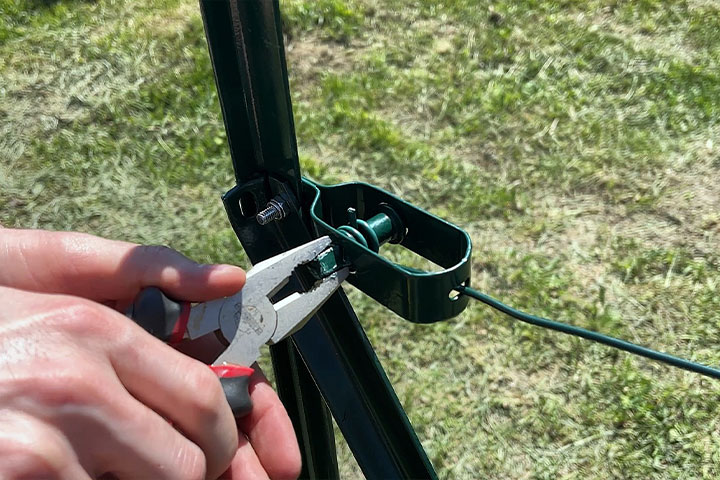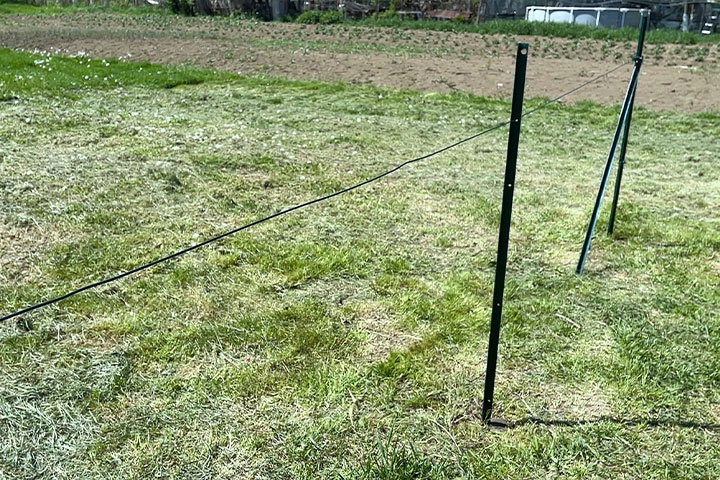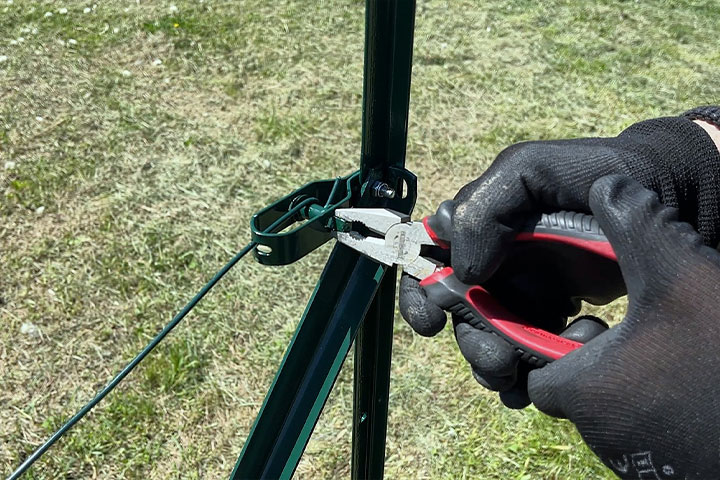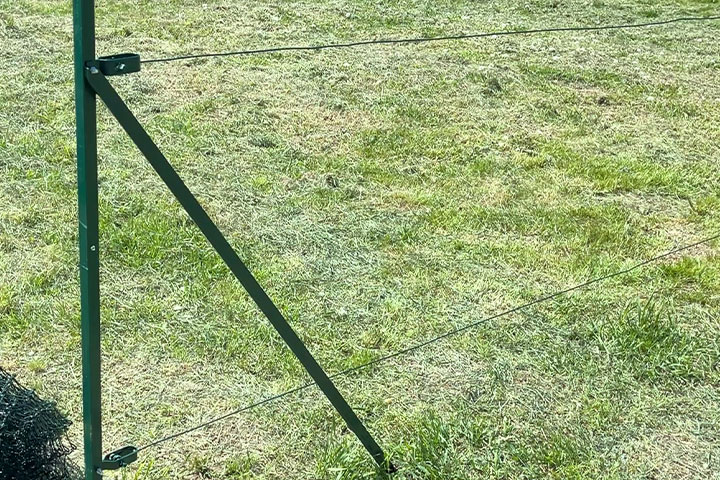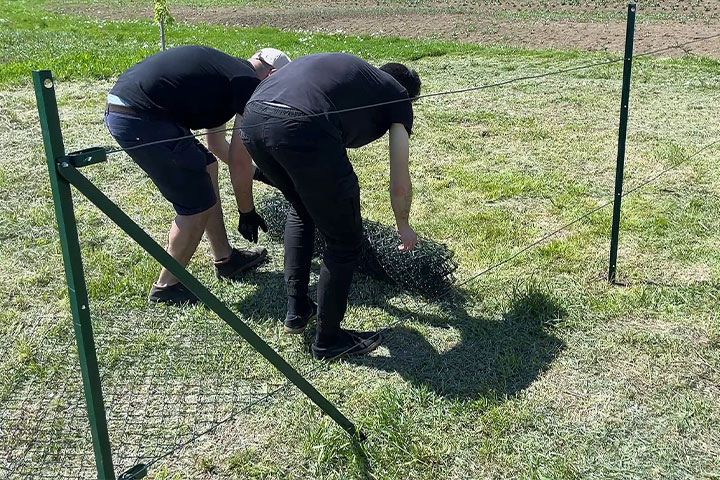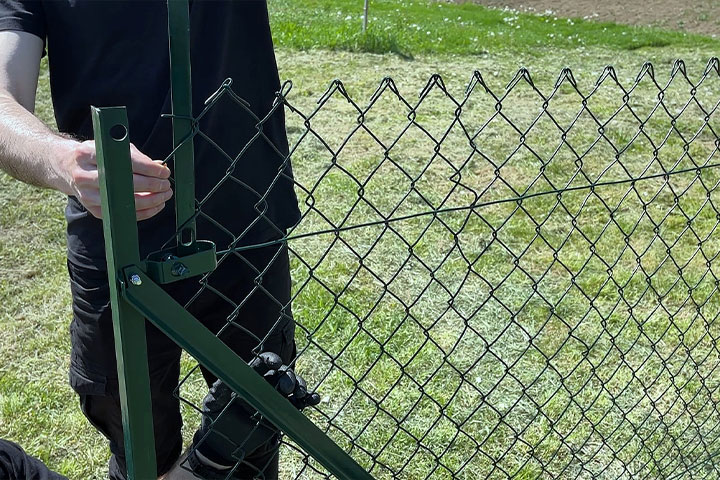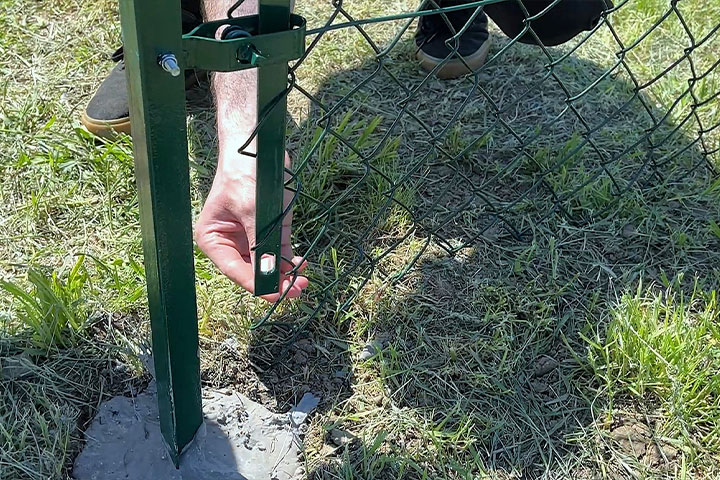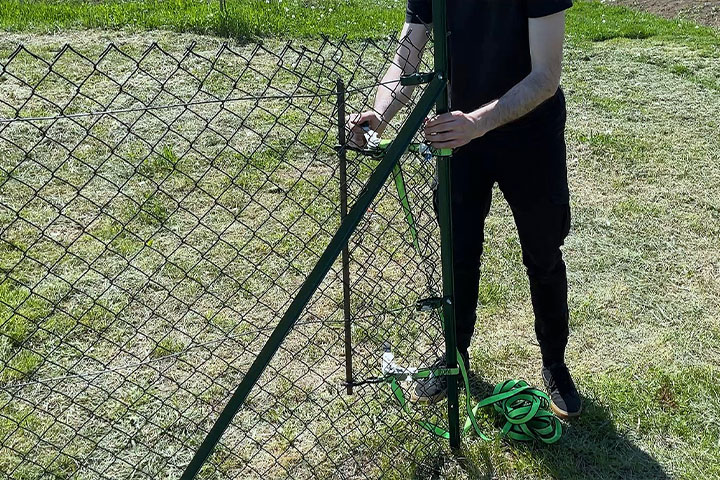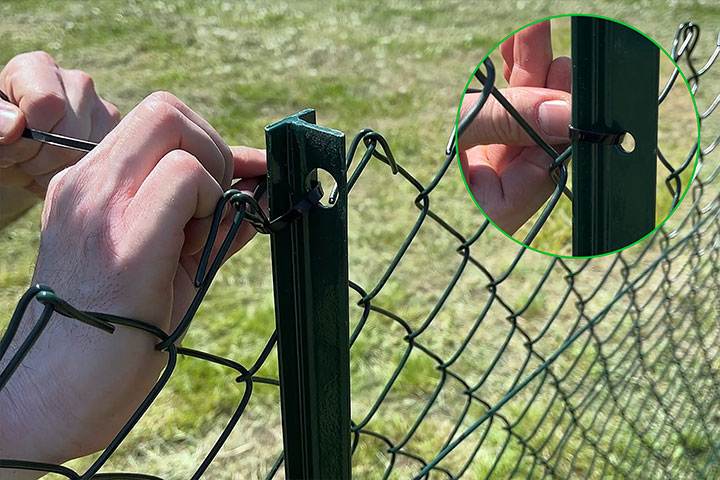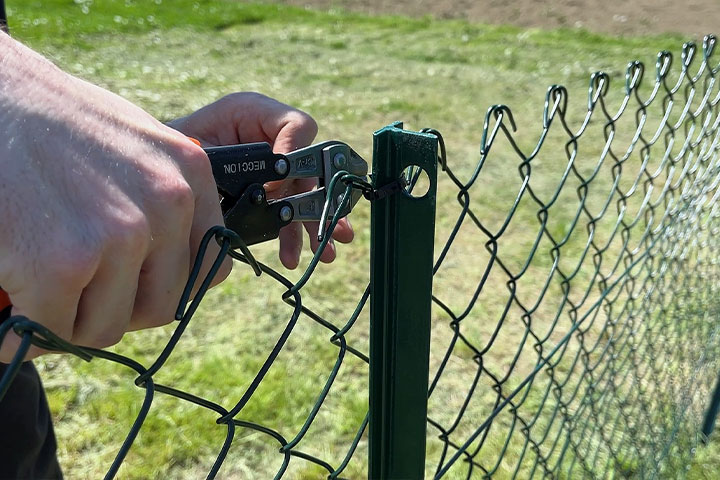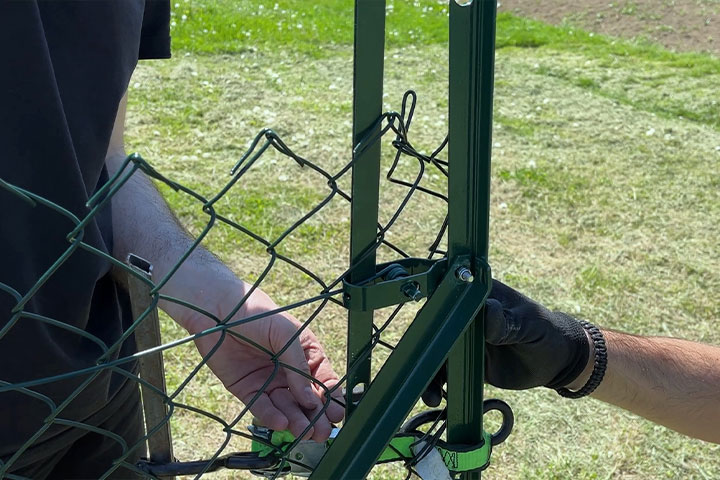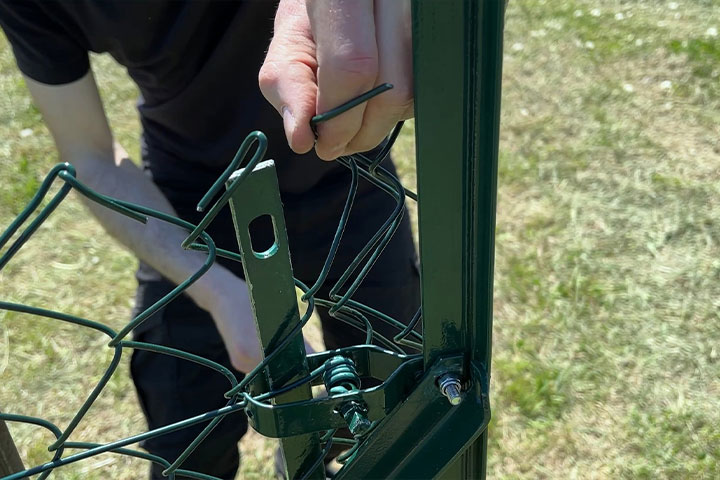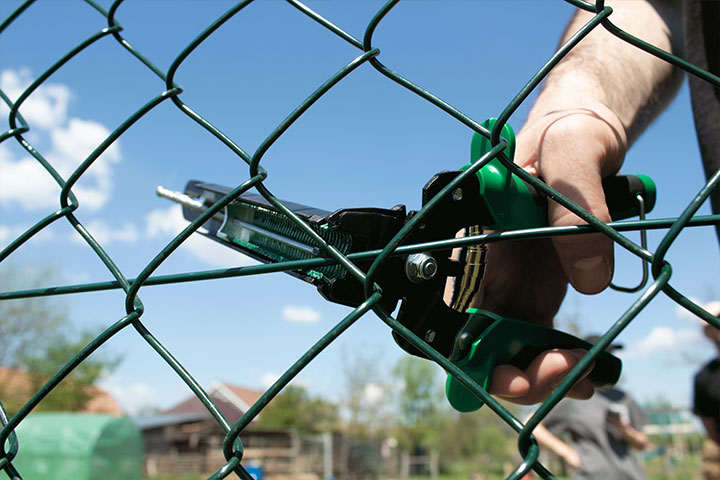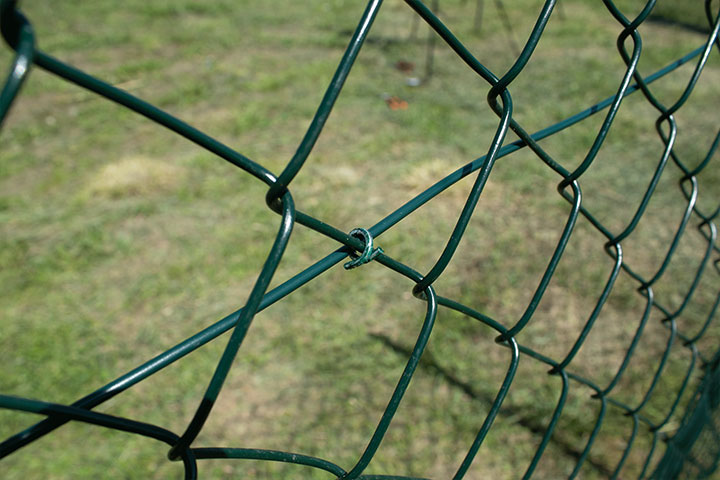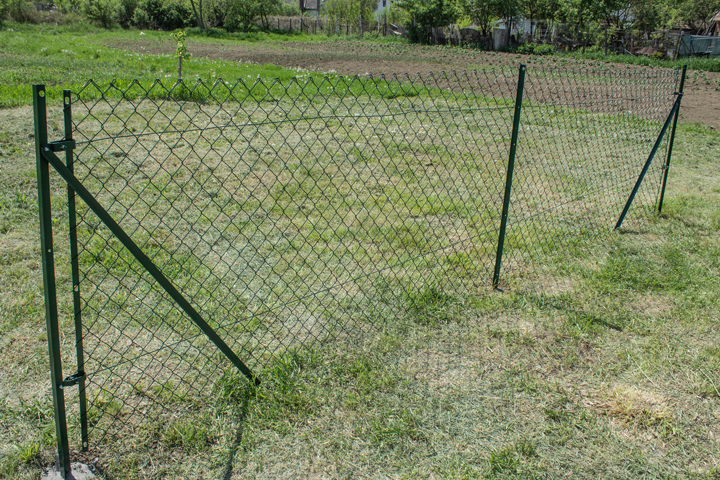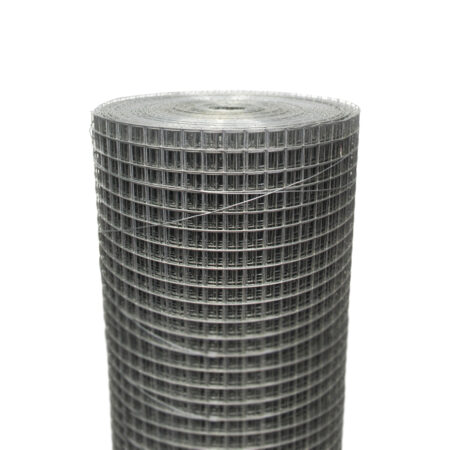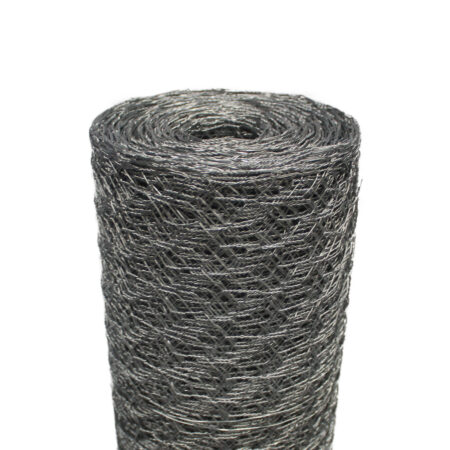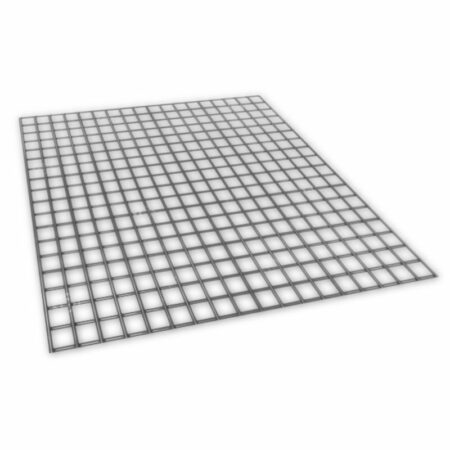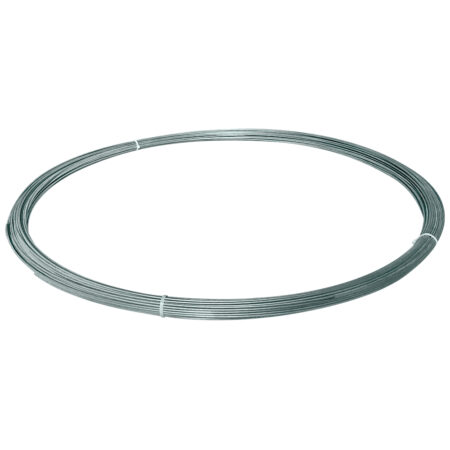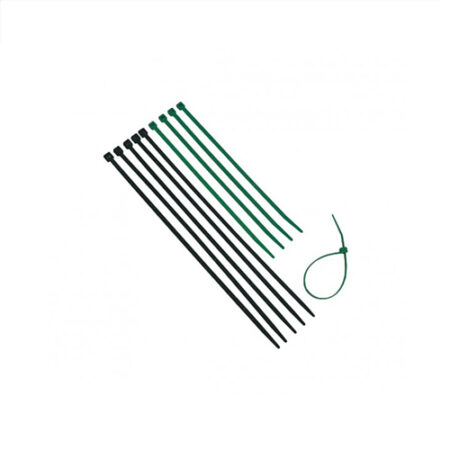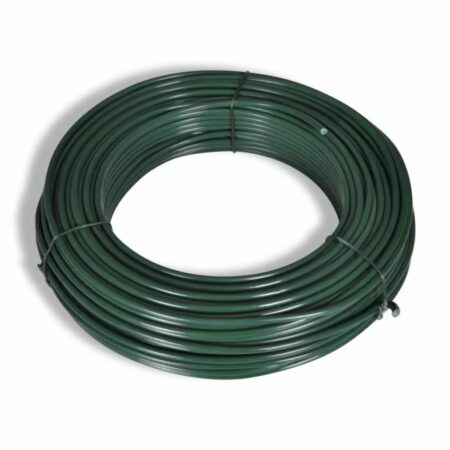T Posts
Strong t-posts offer quick and easy wire fence installation. Often used to create a border around large grass areas, it is also effective at keeping out or containing pets such as dogs or smaller animals.
- Compatible with wire mesh, chicken wire, and panels.
- Temporary or permanent
- Quick & easy installation
- 30-50 year lifespan

Videos






Height Selection
The t-posts are made of very strong iron designed to be driven into the ground approx 50cm to keep them in place. Therefore, the total height should be 50cm longer than the height of the fence that you plan to install. For example, if you plan to install a fence 1m high you will need a 1.5m tall post.
| Post height | Depth in the ground | Max fence height above ground |
| 2.25m | Minimum 50cm | 1.8m or smaller |
| 1.75m | Minimum 50cm | 1.2m or smaller |
| 1.5m | Minimum 50cm | 1m or smaller |
| 1.25m | Minimum 50cm | 75cm or smaller |
Spacing Selection
They are usually installed within a 3m distance. If you wish to increase the sturdiness of the fence you can reduce the spacing or increase the spacing if the fence is being used for lightweight applications such as marking a boundary. Please find the suggested spacing below
| Wire fence type | T-post spacing |
| Chicken wire | 2-3m |
| Welded mesh | 2-3m |
| Wire panels | 1.8m – the spacing should be equal to the length of the panel |
| Stock fencing | 2-3m – use for the middle only. End posts should be wooden to allow for straining |
| Barbed wire | 2-4m |
| Tension wire | 2-4m |
T-Post Compatibility
They are used with a large range of fencing materials with the exception of heavy rolls of weld mesh (over 2mm/14 gauge) or highly tensioned specialist fencing.
| Wire Fence Type | |
| Chicken wire |
– can be used with any type of chicken wire. Install with tension wire to reduce sagging over time.
|
| Welded mesh |
– can be used with welded mesh rolls up to a wire diameter of 2mm (14 gauge). Install with tension wire to reduce sagging over time. Welded mesh over 2mm may pull the posts over due to its weight although it is possible to increase the strength by driving them deeper into the ground and/or setting them in concrete.
|
| Mesh panels |
– can be used with most rigid panels. Does not require tension wire.
|
| Stock fencing |
– end posts require struts and cementing into the ground
|
| Barbed wire | |
| Tension wire | |
| Chain link |
– end posts require struts and cementing into the ground
|
Applications & Uses
| Fence Application | |
| Residential locations |
– used for temporary and permanent residential fencing
|
| Commercial locations |
– concrete into the ground to ensure they remain permanent
|
| Grass areas |
– they are designed to be driven into soil using a rammer or mallet
|
| Concrete areas |
– they are designed to be driven into softer ground such as soil but they can also be set into concrete if required
|
| Large areas |
– they do not require digging or concreting into the ground making it a lot quicker to cover larger grass areas
|
| Strong border |
– they are made of thick 3.5mm iron. They will make a very strong, designed to work with wire mesh rolls up to 2mm (14 gauge).
|
| Quick & easy install |
– they do not require digging and/or setting in concrete. They can be driven into the ground much quicker as long as the ground is soft enough.
|
| Temporary |
– drive the posts into the ground but do not concrete them in. If you are concerned about the strength of the fence without concrete then use a taller size so you can drive it further into the ground
|
| Permanent |
– set the end posts into concrete to create a strong permanent fence. You can also set the middle sections into concrete to increase the strength further.
|
| Garden |
– good for garden fences and will double up as a trellis to grow your plants up
|
| Cover large areas |
– often used to cover large areas such as woodland or farmland. They are quicker and easier to install than traditional wooden options.
|
| Marking boundaries |
– often used with tensioning wire for a cheap and economical option to mark large boundaries.
|
| Animal Fencing |
– good for small to medium-sized animals such as chickens, cats, and dogs.
|
| Dogs |
– perfect for creating permanent or temporary dog runs. If the dog is particularly strong and will test the fence use 2mm+ thick panels and concrete them into the ground.
|
| Poultry |
– perfect for creating permanent or temporary chicken runs
|
| Keep out wild animals |
– they will keep out most small to medium-sized animals such as rabbits and foxes. Each animal will require a specific size and strength of wire mesh. For more info, please visit the animal fencing page.
|
| Large farm animals |
– not good for large farm animals such as cows and sheep that rub up against the boundary. The weight of larger animals may push it over.
|
| Highly tensioned |
– by setting the end posts into concrete they can be used with tensioning wire but they are not suited to fences that need to be highly tensioned such as for stock fencing or chain link fences.
|
Installation Instructions
With Chicken Wire or Wire Mesh
With Mesh Panels
With Chain Link
| To Do | Explanation |
| Step 1 – Mark Area
|
Mark a straight fence line between the two end poles. |
| Step 2 – Measure Distance
|
Use a tape measure and mark the T pole locations 2 -3m apart.
For extra stability, reduce the distance. |
| Step 3 – Install End Posts
|
Use a rammer or mallet to drive the end poles 50cm into the ground.
Make sure they face the same direction by ensuring the holes face each other. |
| Step 4 – Check for Same Height
|
Attach a piece of string between the end posts then check with a tape measure that they have been installed at the same height. |
| Step 5 – Check for Straightness
|
Also use a spirit level to ensure they have also been installed perfectly straight. |
| Step 6 (Optional) – Set in Concrete
|
For stronger and more secure fencing, set your poles in concrete by digging a 50cm hole and pouring cement into it for them to sit in. |
| Step 7 – Install Middle Posts
|
Install middle poles by repeating steps 3-5.
Remember to check they are facing in the same direction and they are being installed both straight and at the same height.
You can also concrete in the middle poles if you would like an extra strong fence. |
| Step 8 (Optional) – Install Tension Wire
|
If you are using light weight mesh, you may want to attach a tension wire between the end poles to prevent sagging.
Wrap the tension wire around the hole of the end posts, then secure by simply twisting the end of the wire using a plier.
Important: Do not overtension the wire! |
| Step 9 – Attach Mesh
|
Attach the mesh to the end pole using cable ties, which you can thread through the pre-drilled holes. |
| Step 10 – Pull Tight
|
Pull the mesh tight then attach it to the second post with cable ties.
Repeat until you get to the end.
Important: Do not pull too tight!
|
| Step 11 (Optional) – Attach to Tension Wire
|
If you have installed tension wire, attach the mesh using cable ties approximately 30-45 cm apart. |
FAQ
How deep should I bury them under the ground?
The bottom should be buried 45-50cm into the ground. This means that you should purchase a T post 50cm taller than the height you would like your fence to be. For example: if you would like a 1m tall fence you should purchase a 1.5m tall fence.
Can I use them without cement?
Yes. The fence won’t be as strong without cement but it will be quicker and easier to install. This is useful if you want to install a temporary fence or the fence will not come under a lot of strain such as large animals leaning against it. As an alternative option, it is also possible to sink the post into gravel, sand or crushed rock which will be stronger than soil but not as strong as cement.
Can I use them as a temporary fence?
Yes. If you install without cement and they will be easier to take out of the ground. Installing and uninstalling without cement is quick and easy making it a good option when a temporary yet sturdy fence is required.
How can I drive them into the ground?
Most customers use a rammer which is the best option. If you do not have a driver a strong mallet should do the job.
How far apart should I space them?
Most fencing will have a spacing of approx 3 meters. If you place them closer together the fence will be stronger and if you space them further apart the fence will be less sturdy. The lighter the fence mesh/material being used the further apart they can be installed.
How long will they last?
Around 30-50 years. They are made of very strong thick iron and they are also covered in PVC or galvanised giving them strong protection from corrosion. The exact length of time will depend on the environment it is subjected to. For example, if it is constantly being pulled around and dragged along the floor it may not last as long as it would otherwise.
Do I need to use tension wire to construct the fence?
No. Tension wire will keep the top middle and bottom of your fence straight but it isn’t necessary. Mesh panels are rigid and do not require tension wire to remain straight. If installing without tension wire is your preferred option panels would be a good choice.

